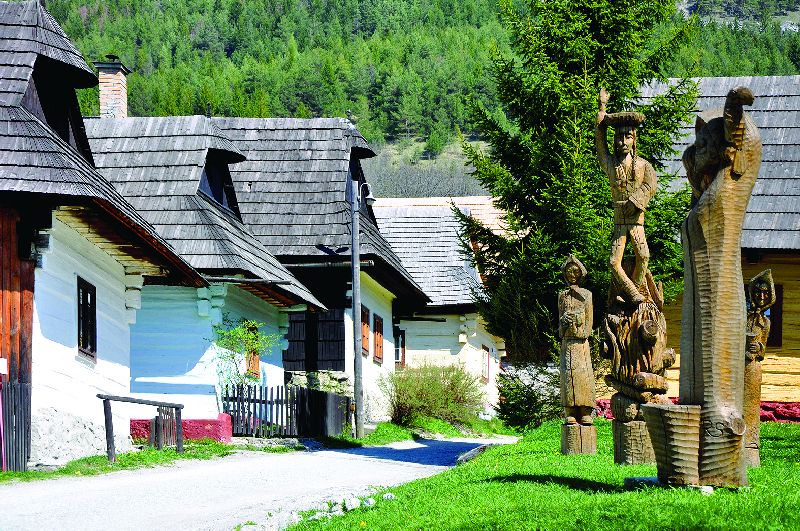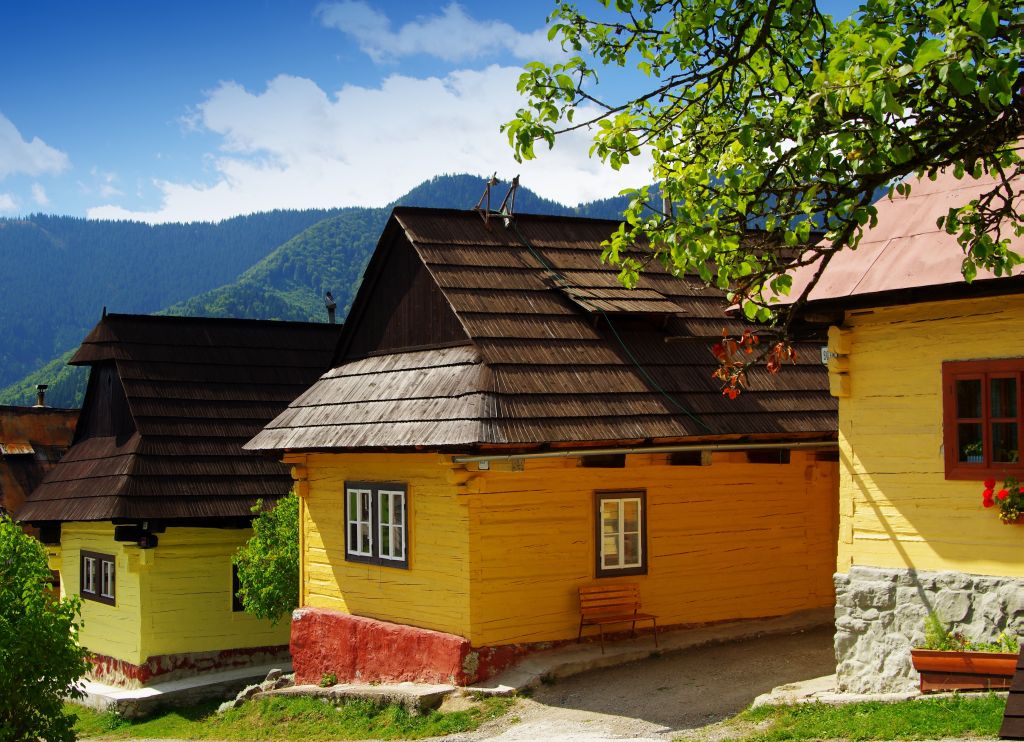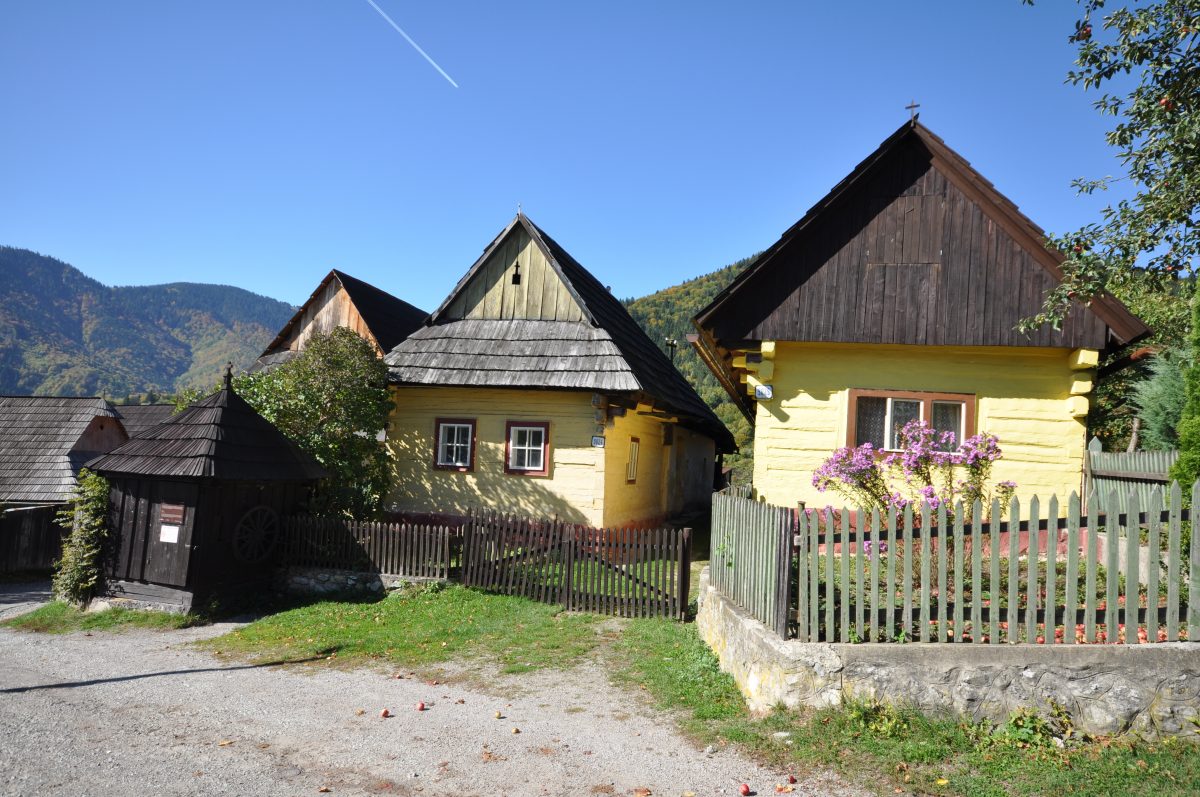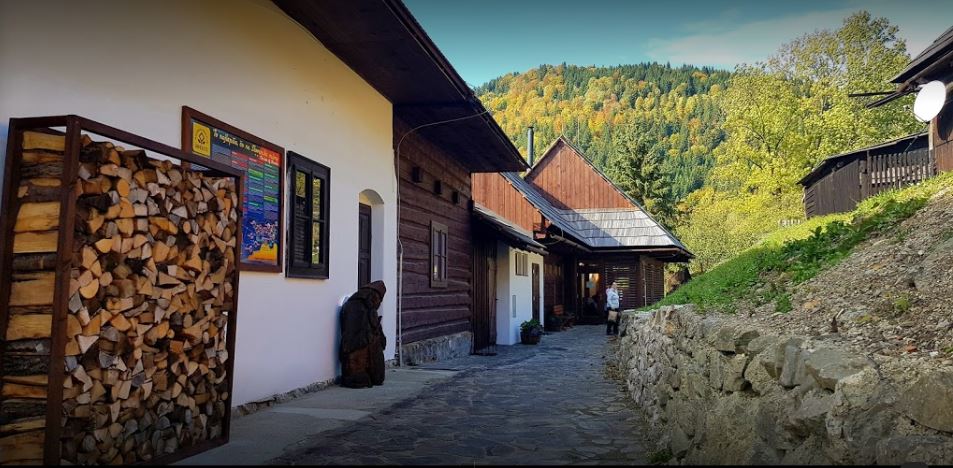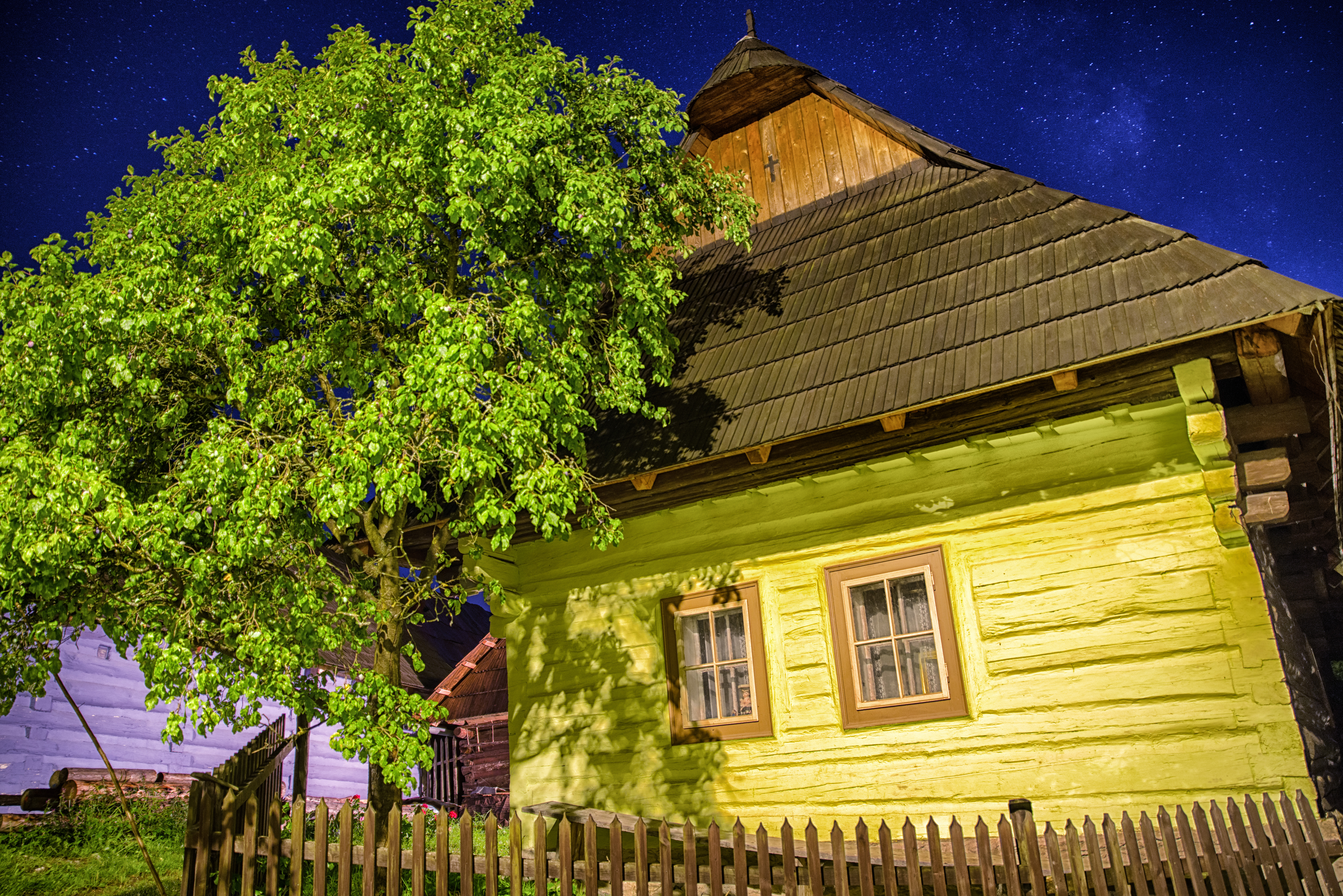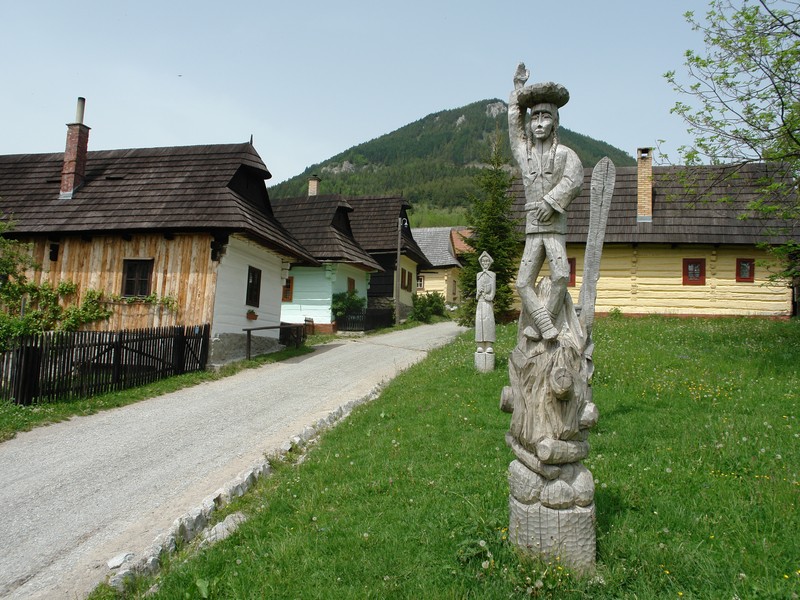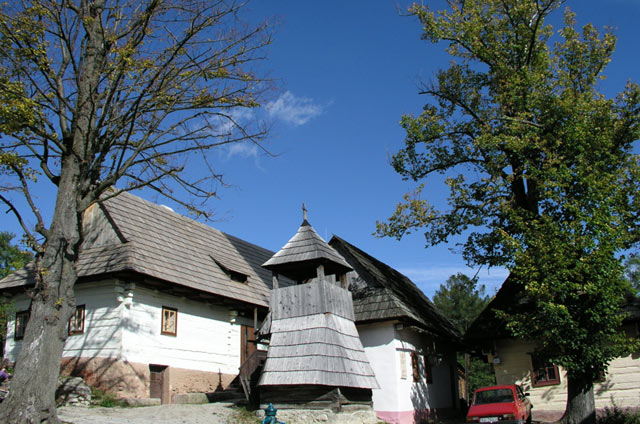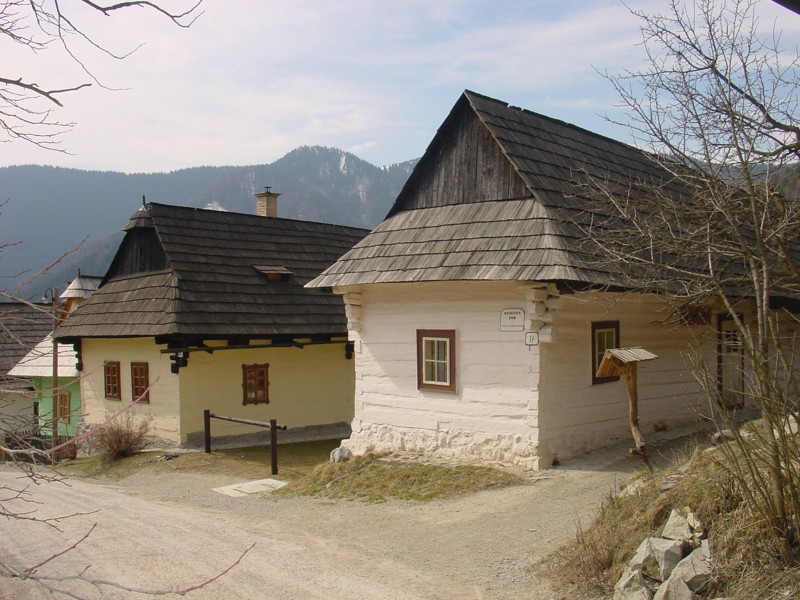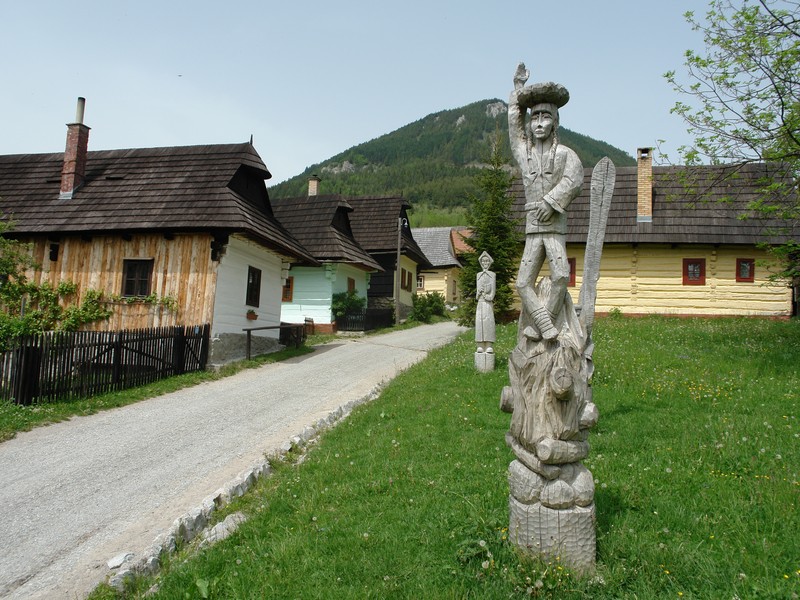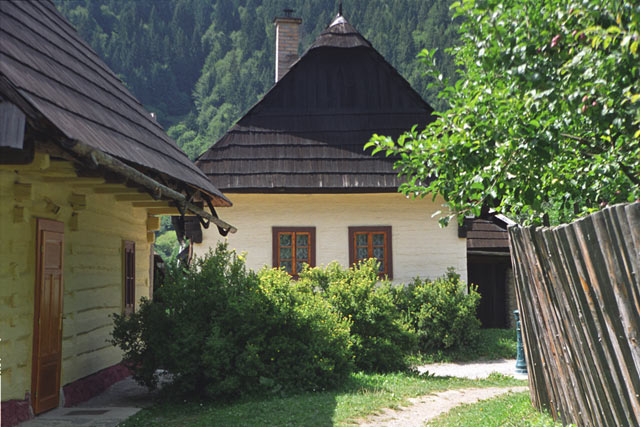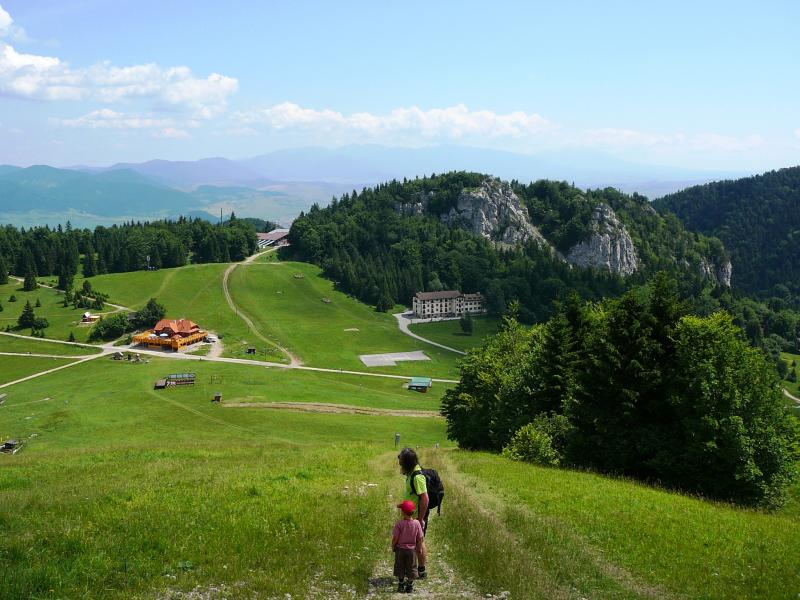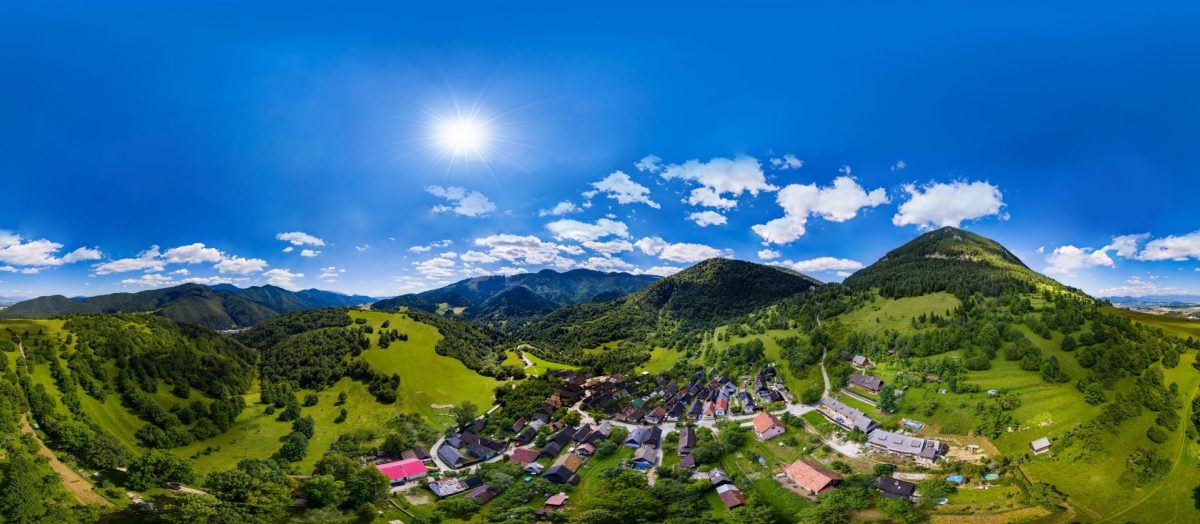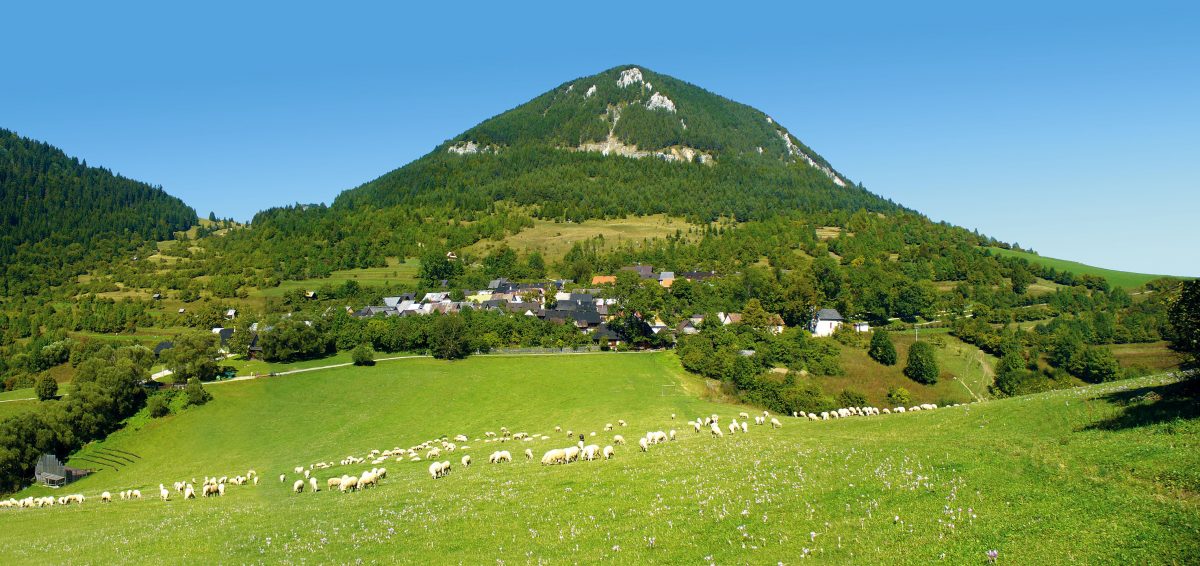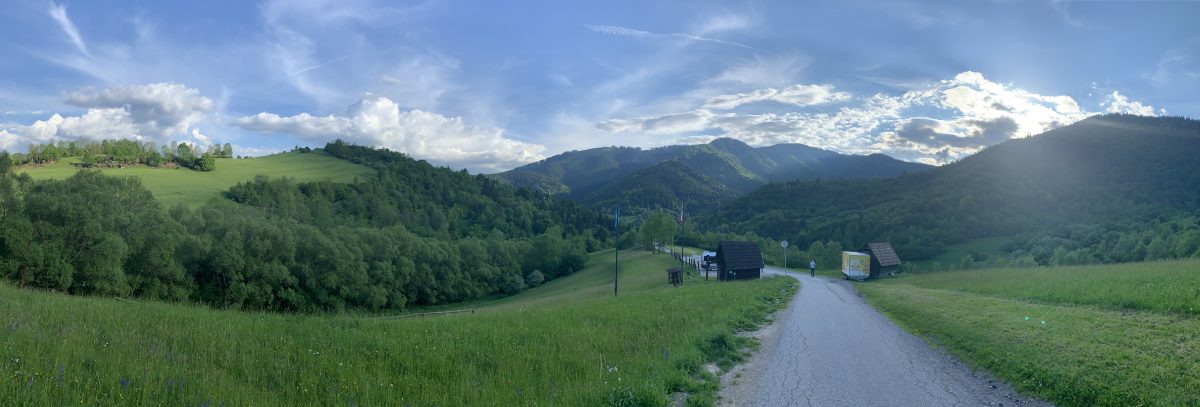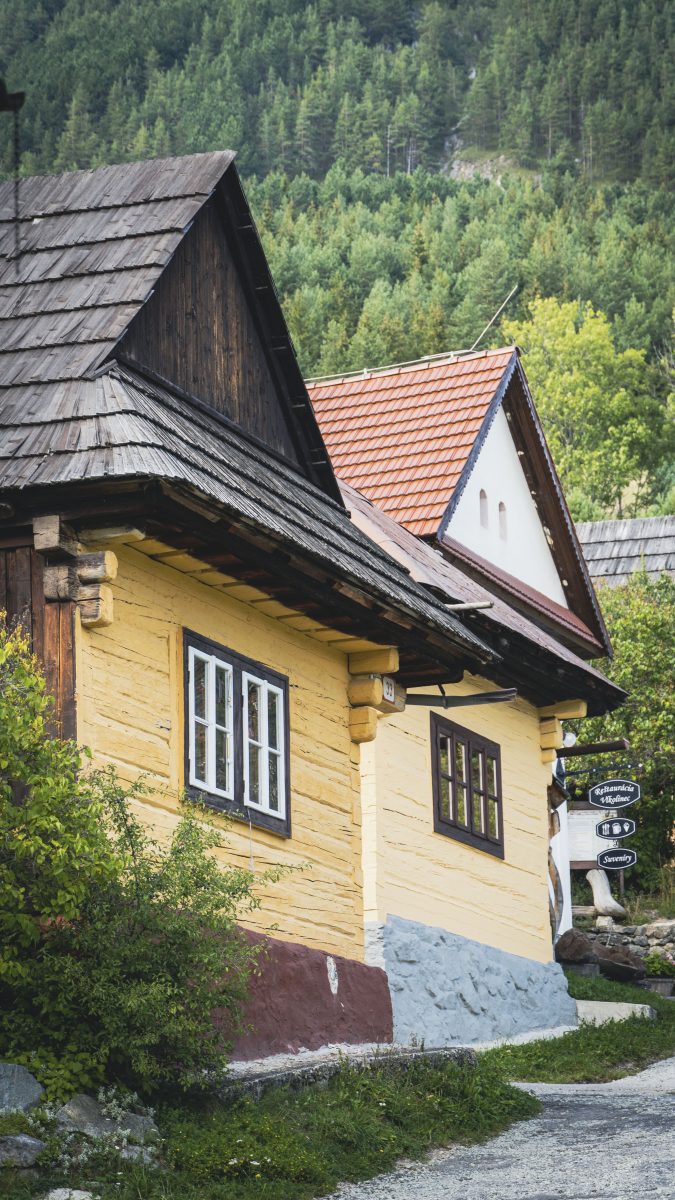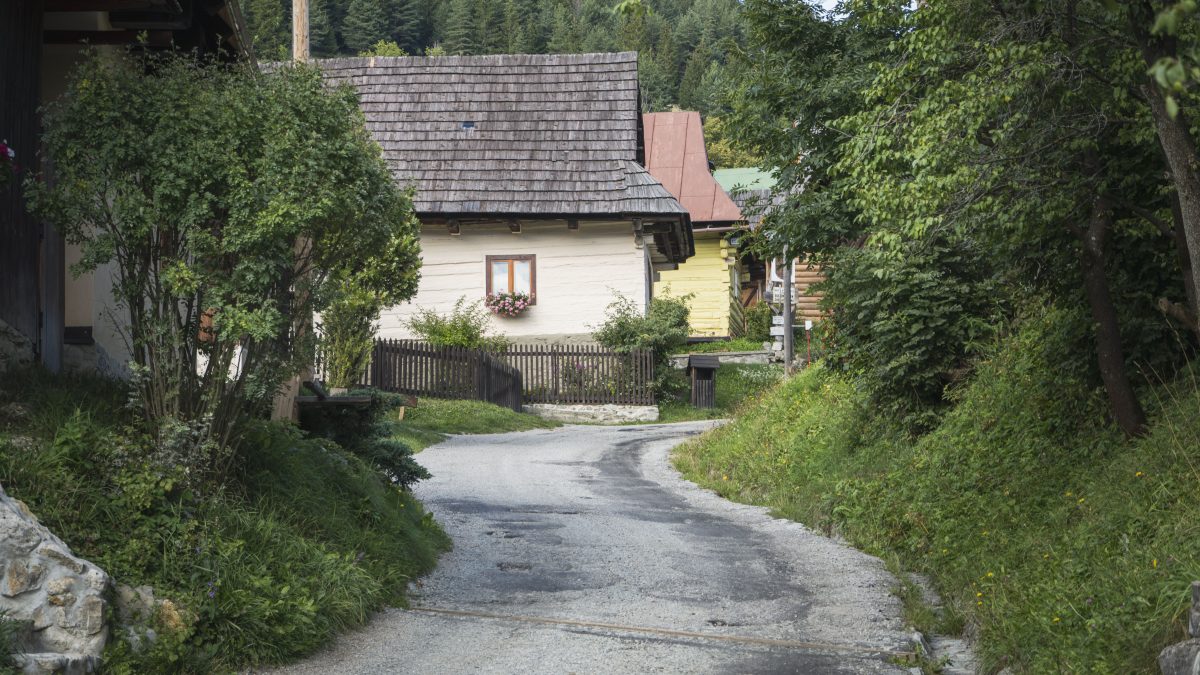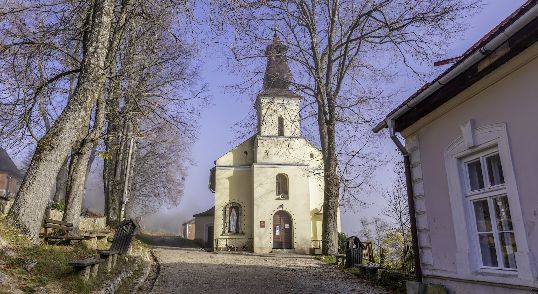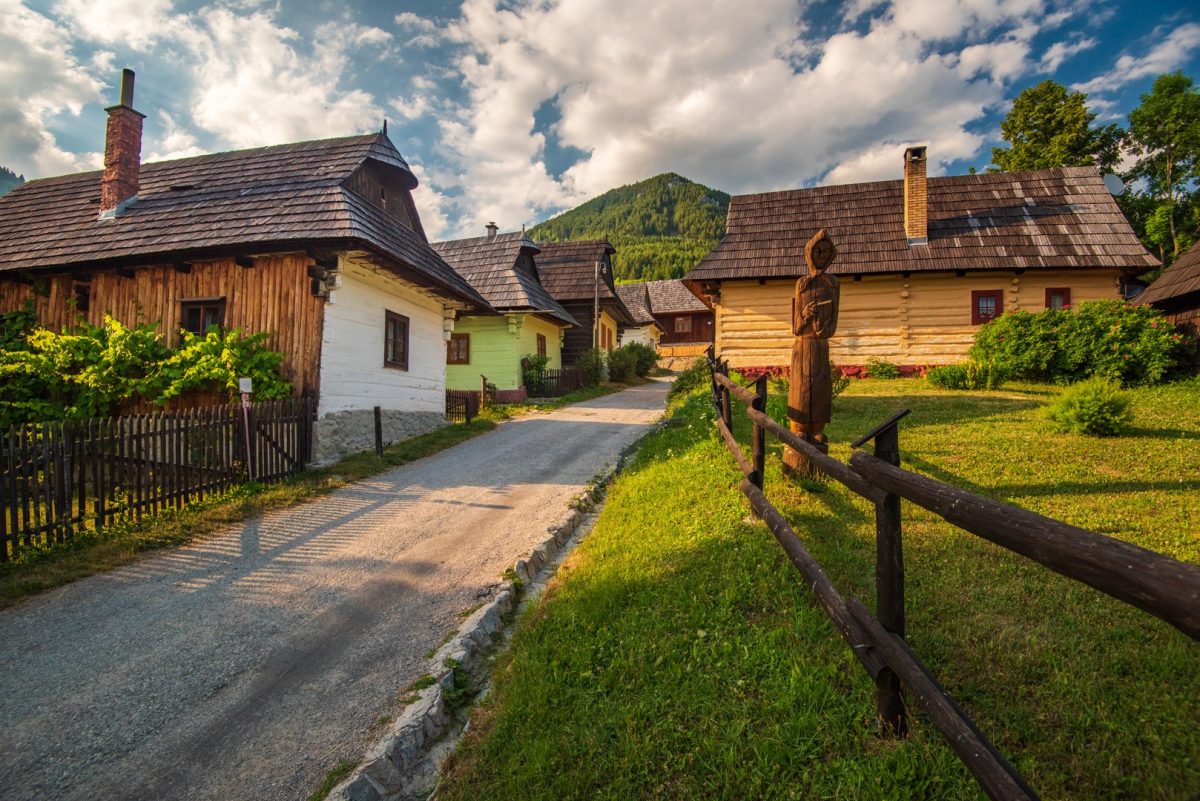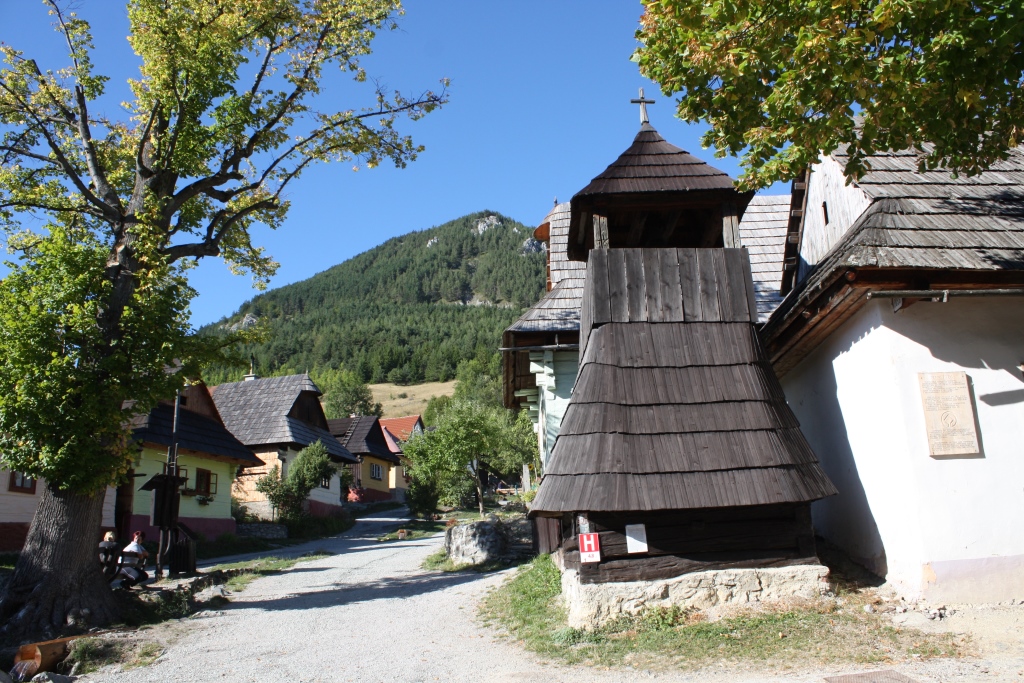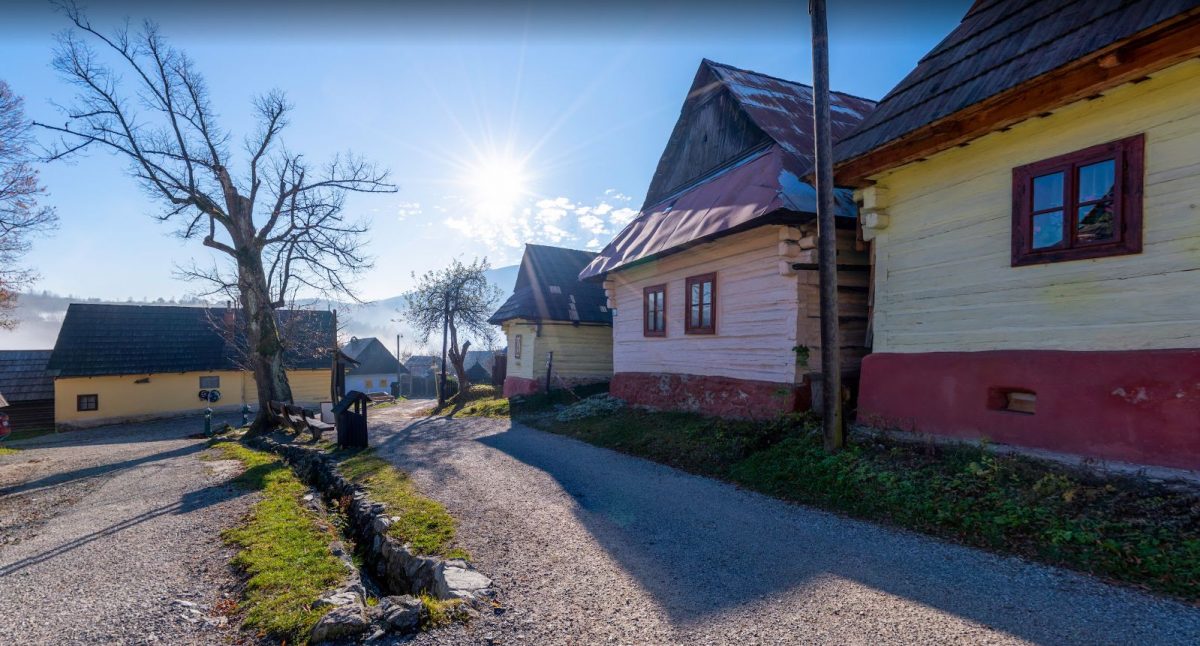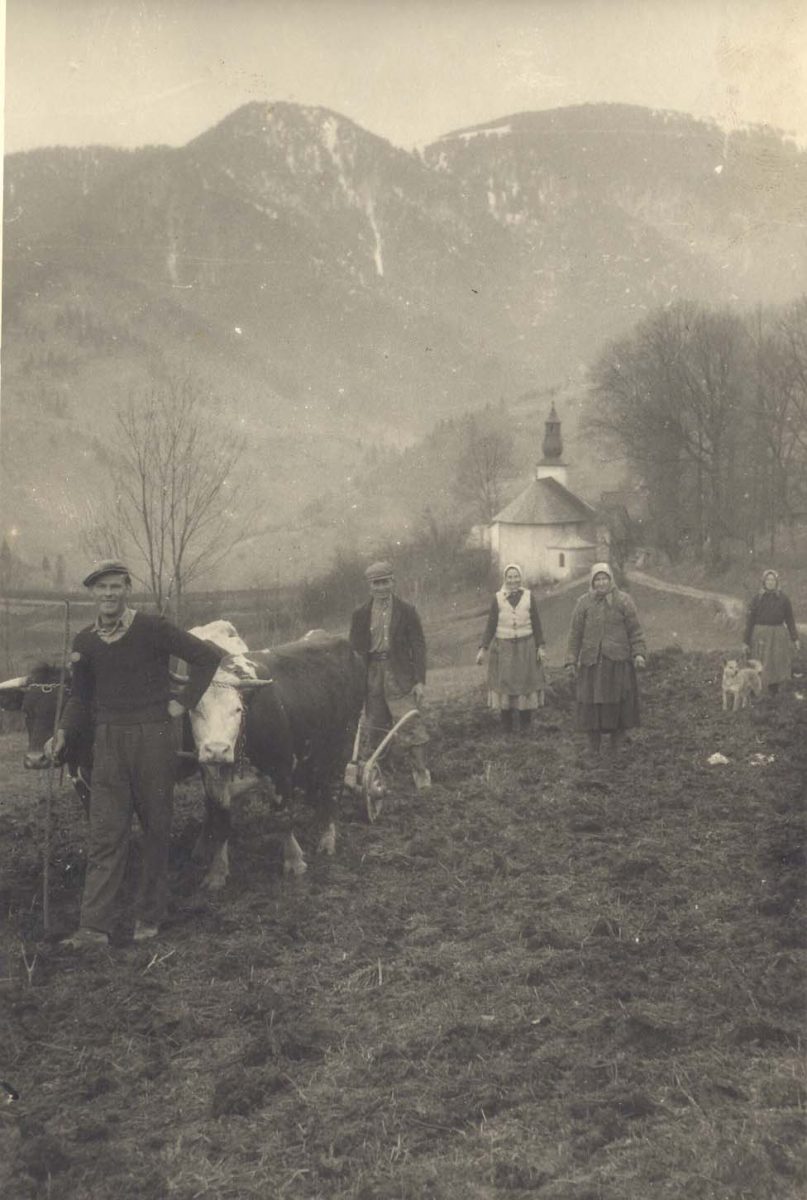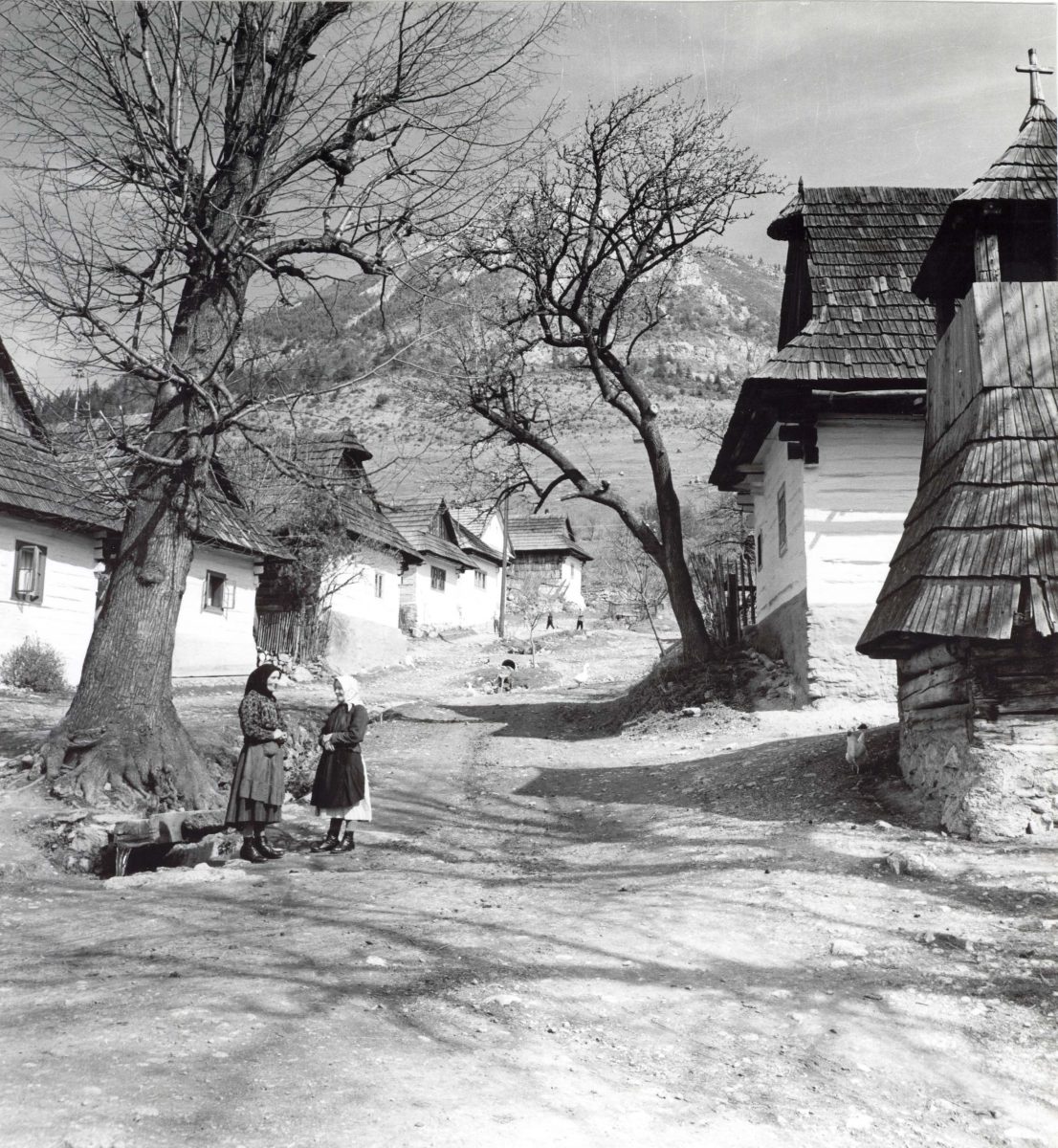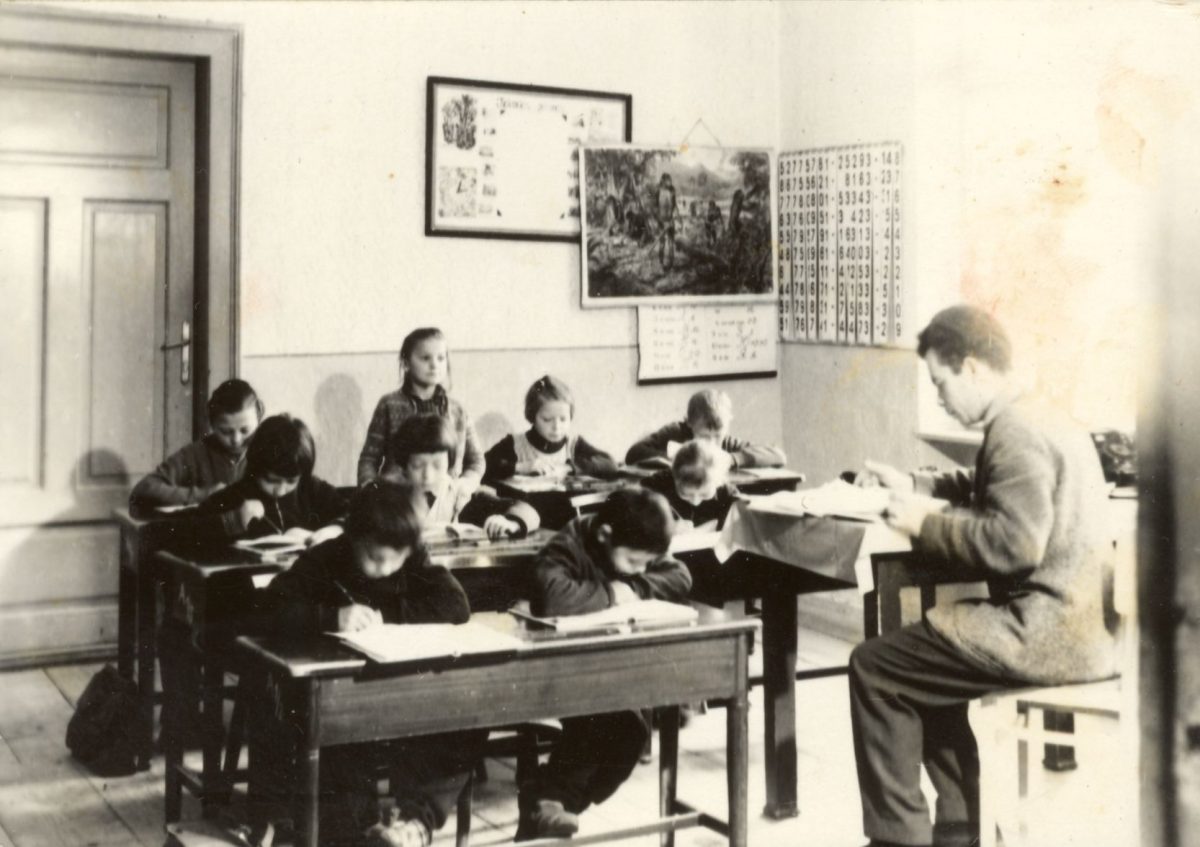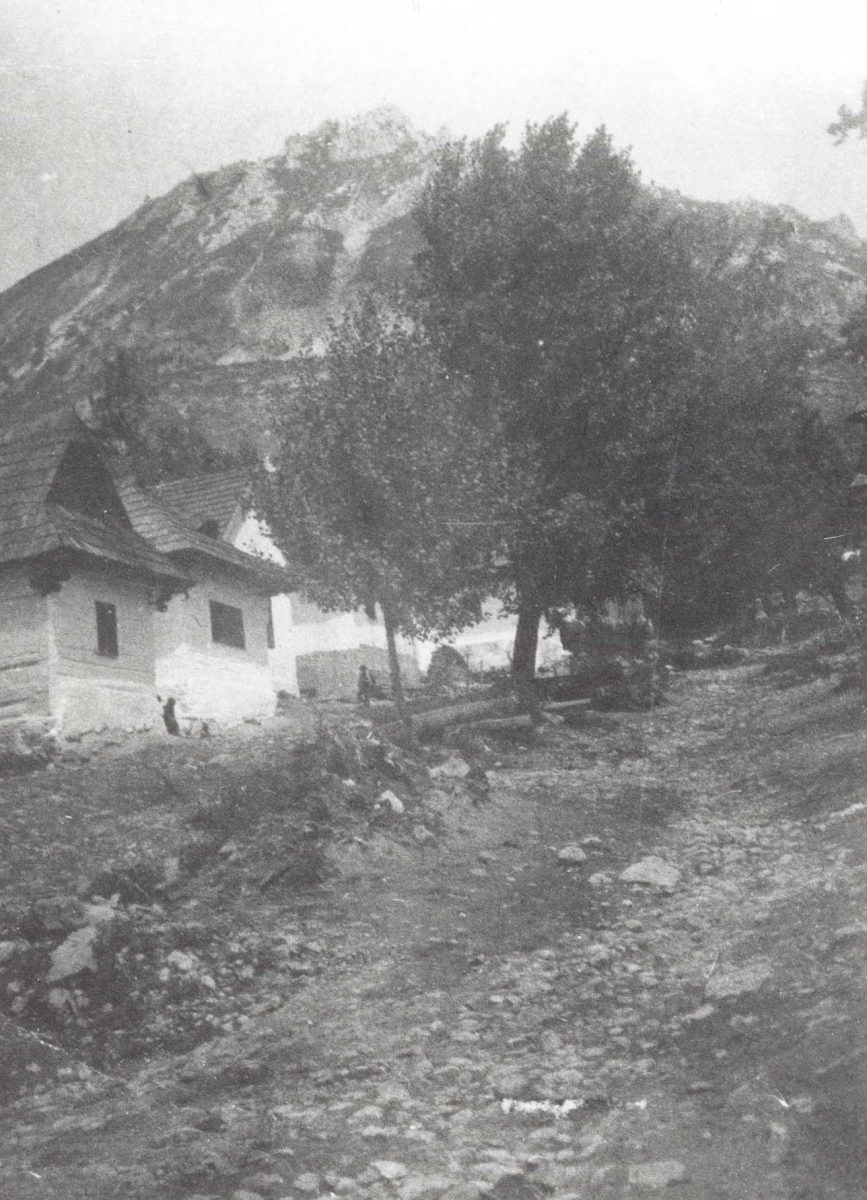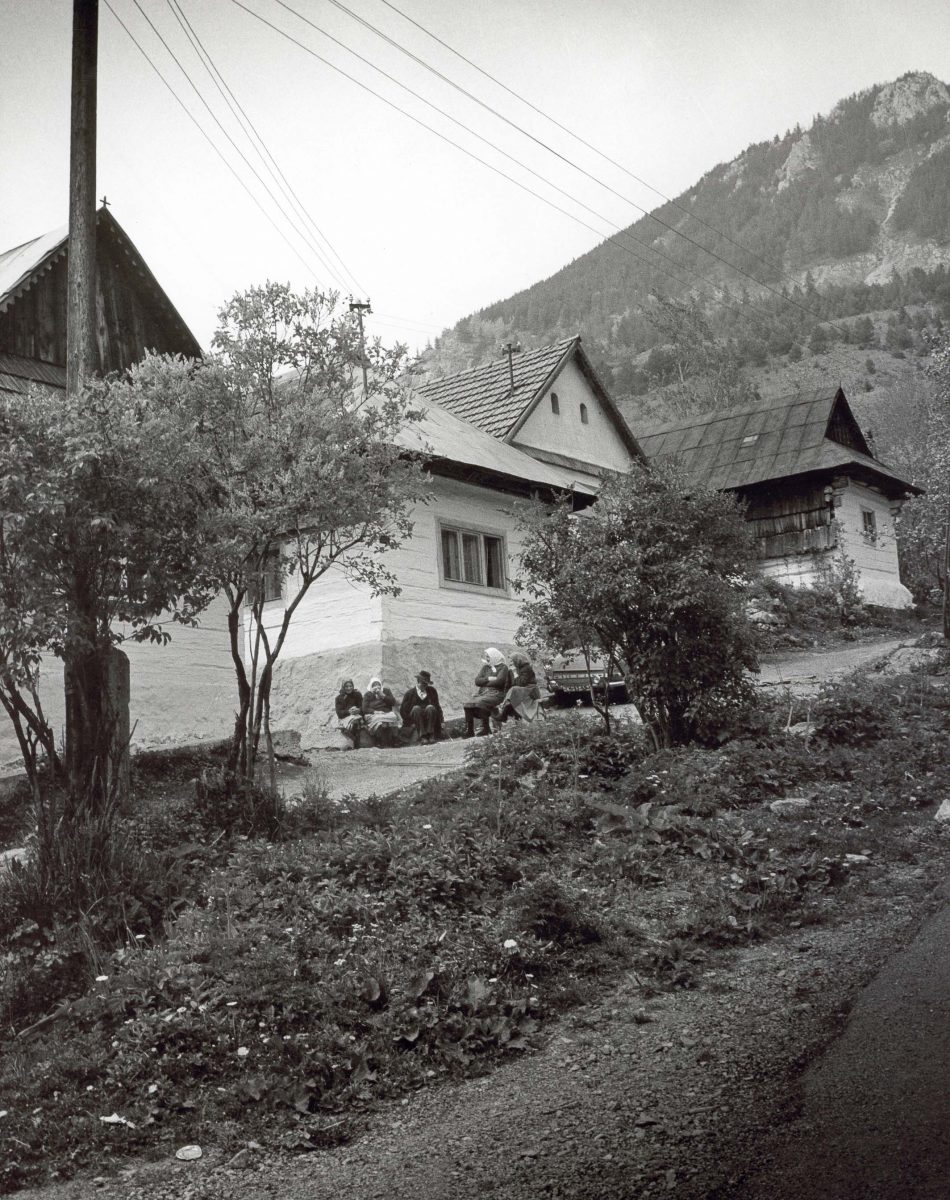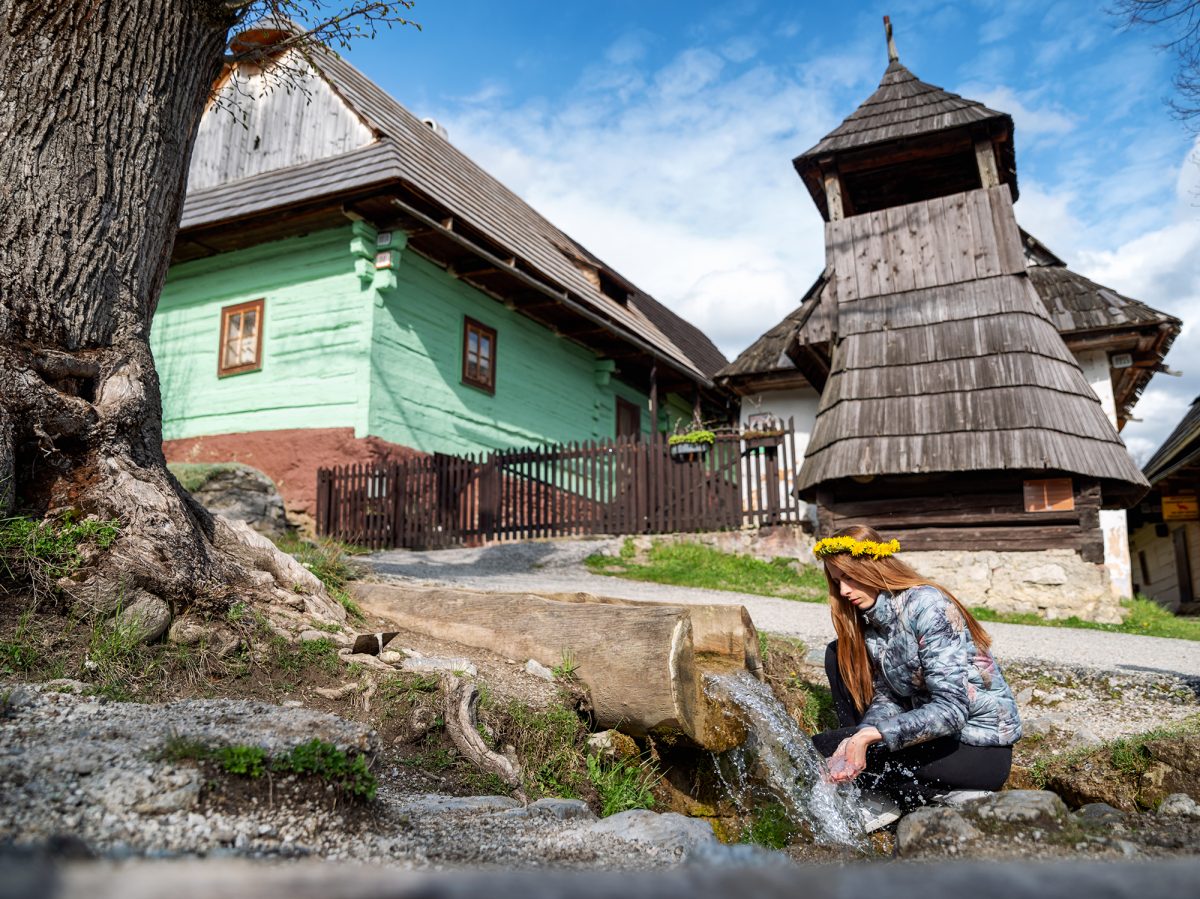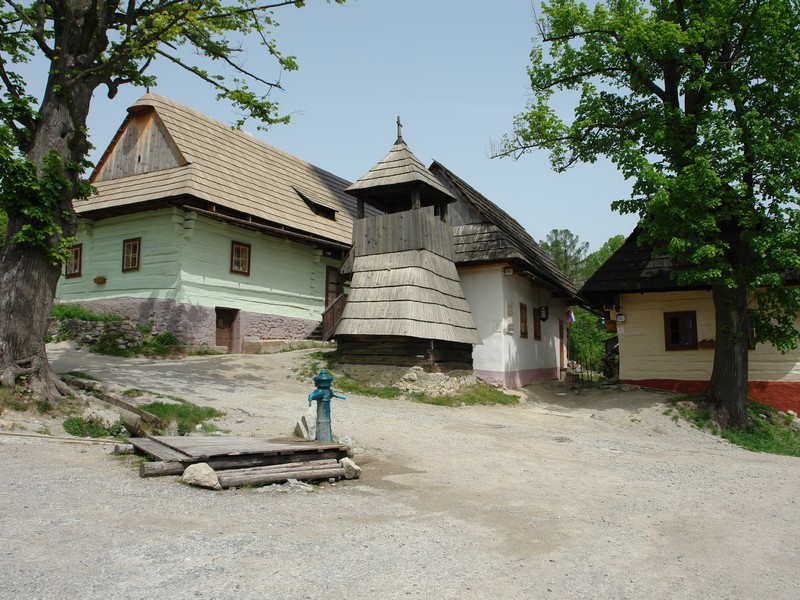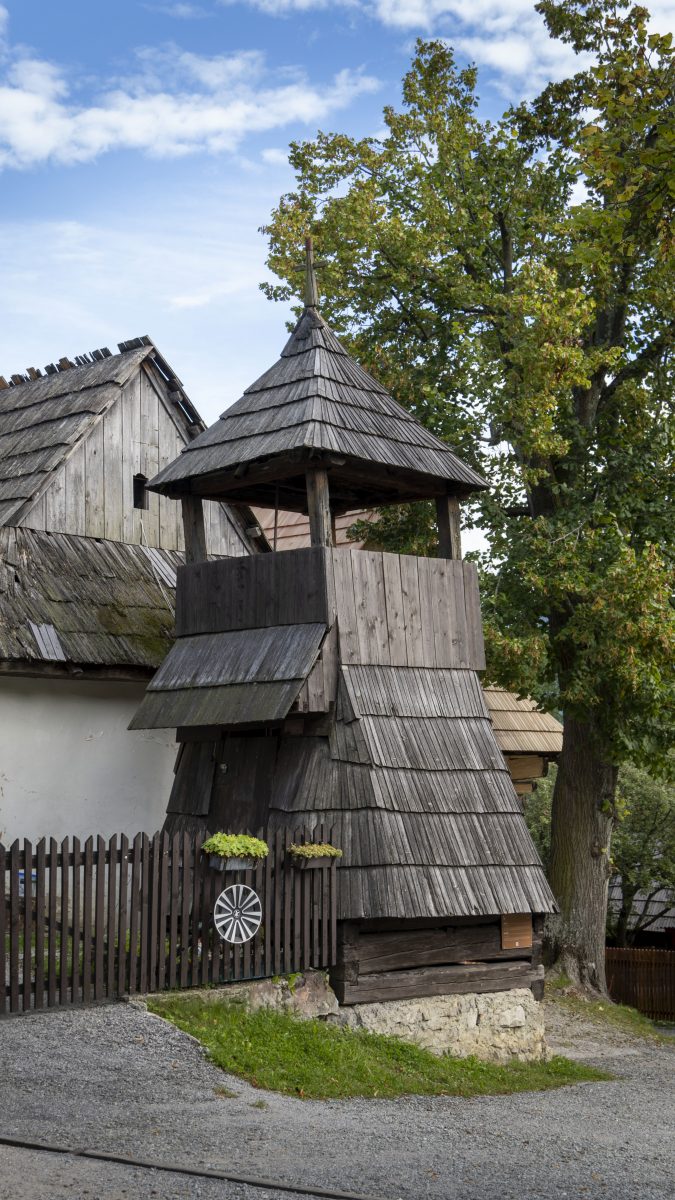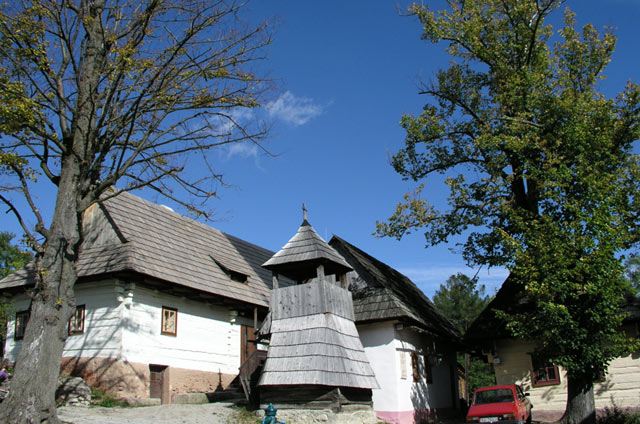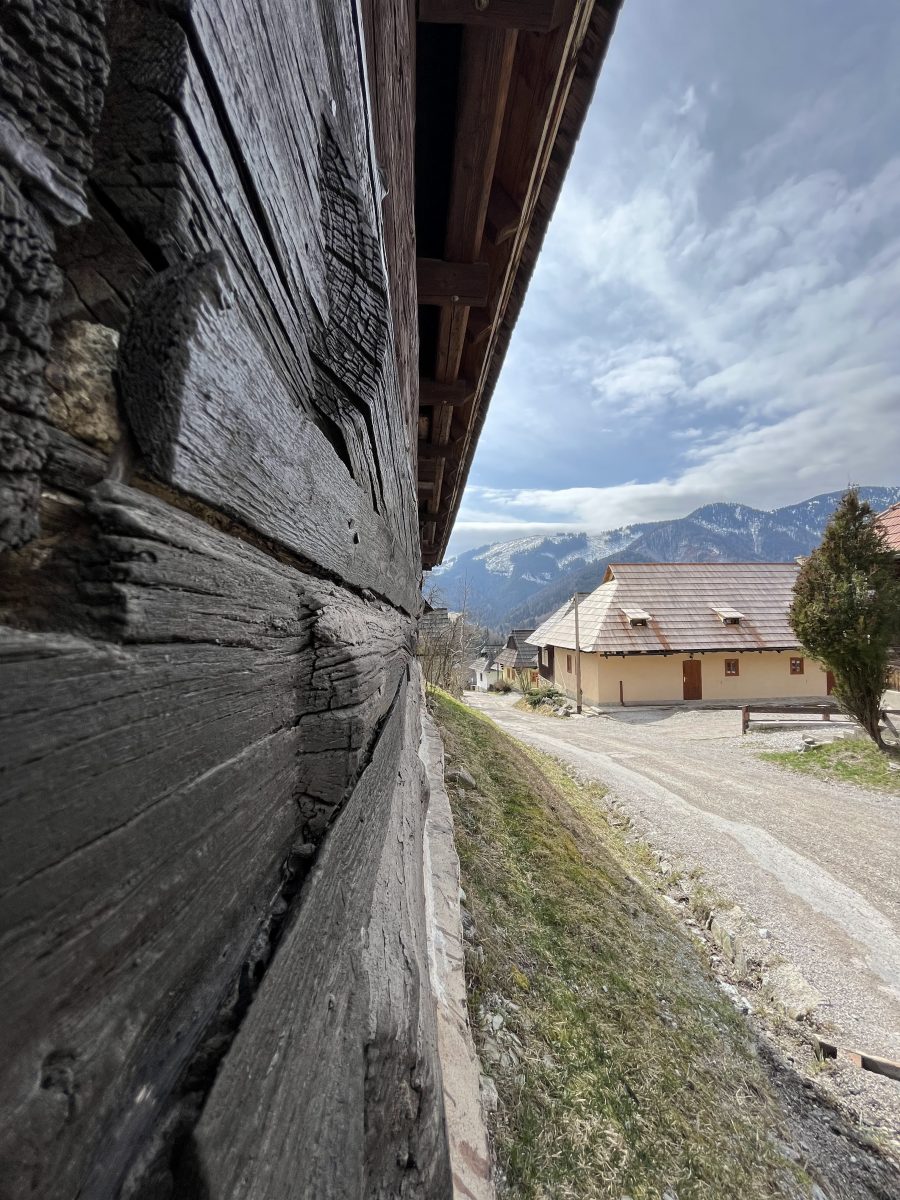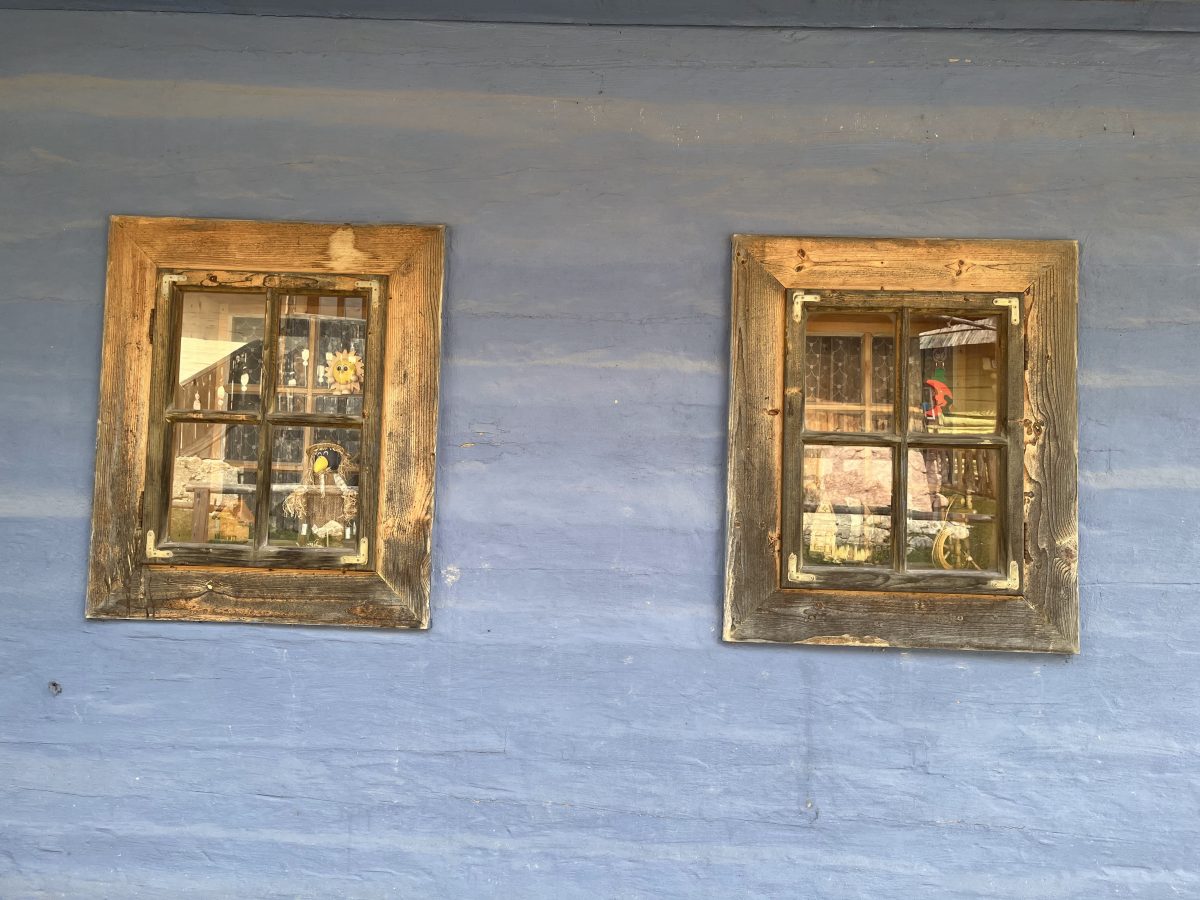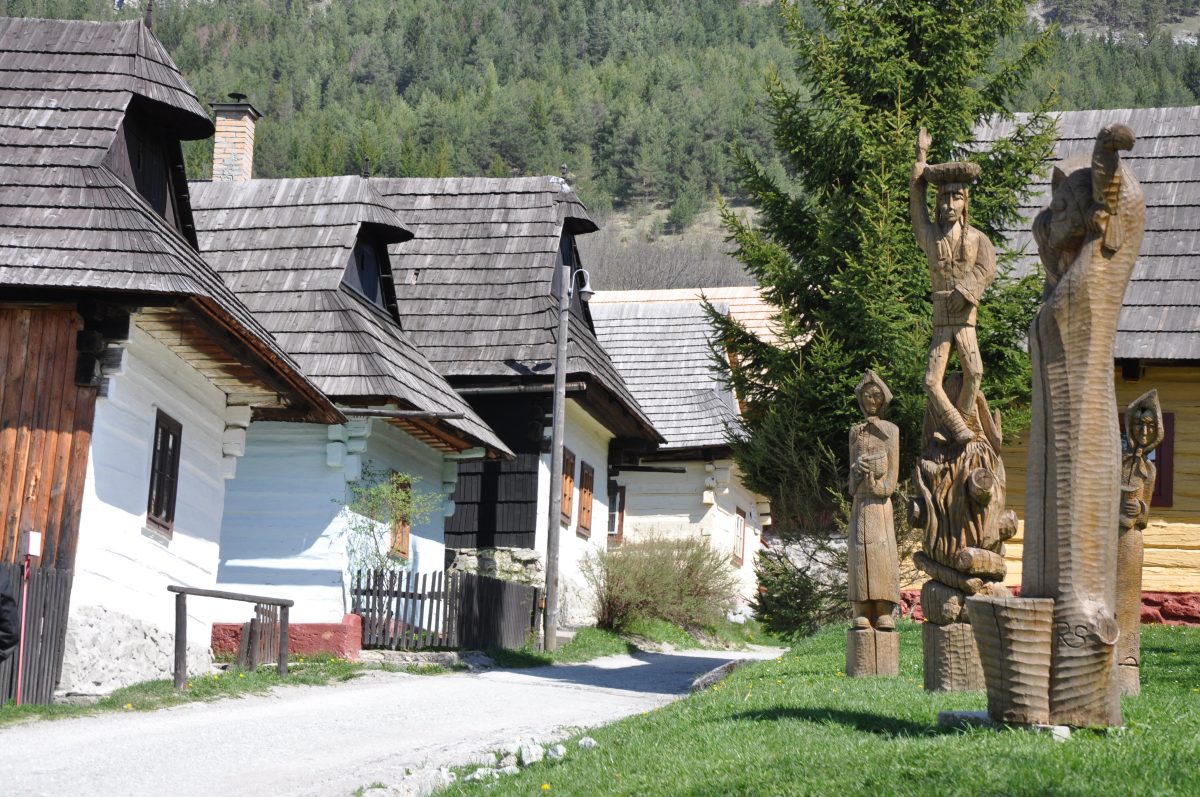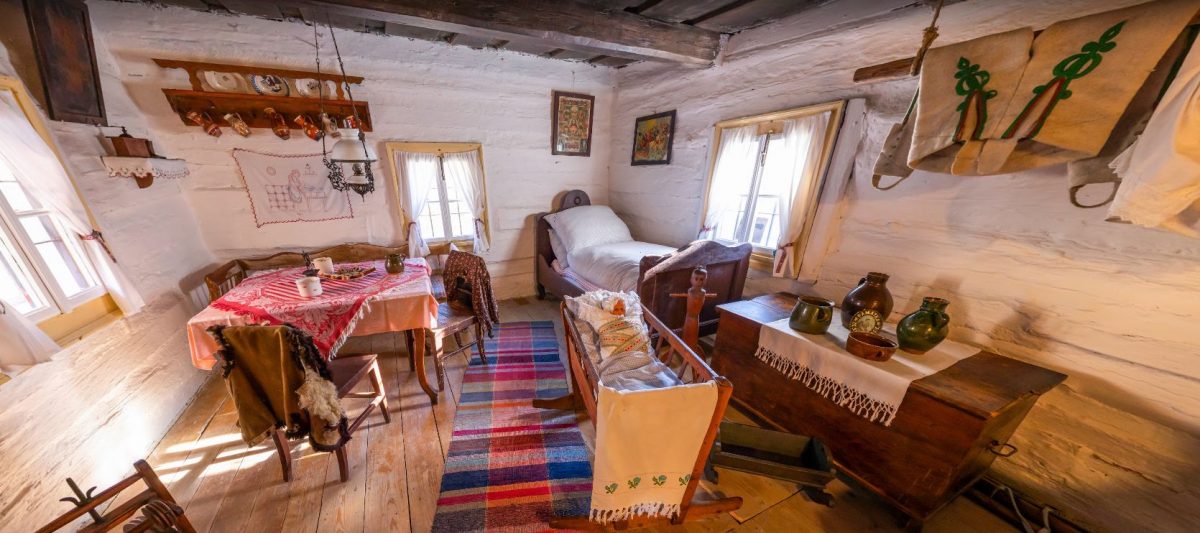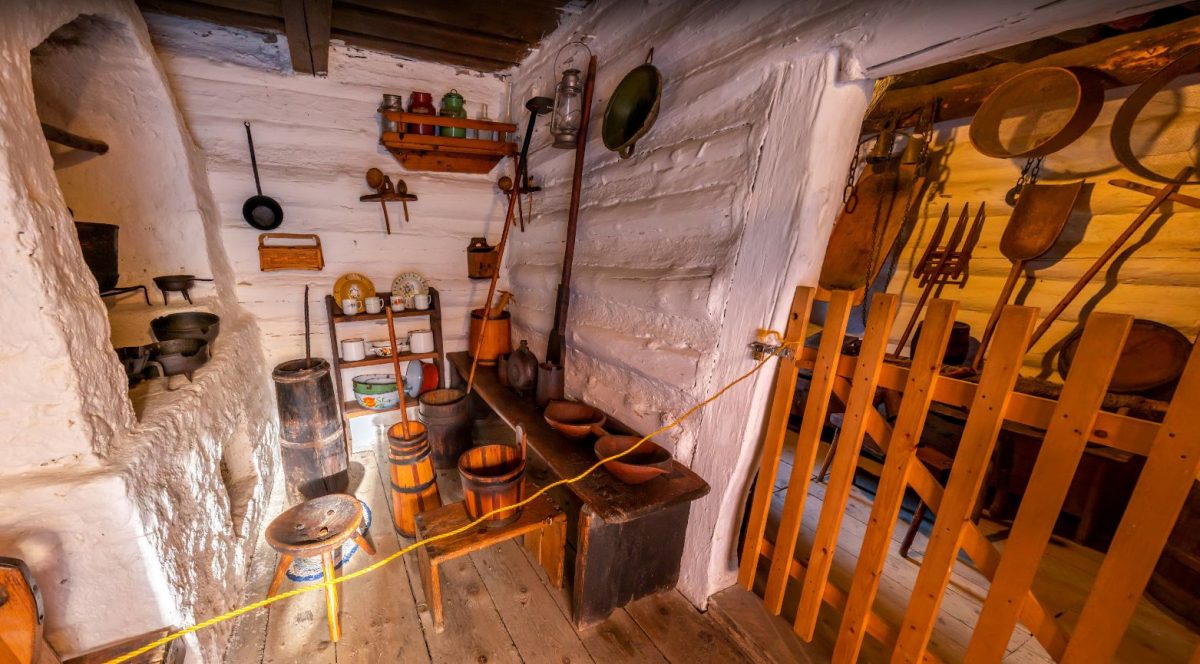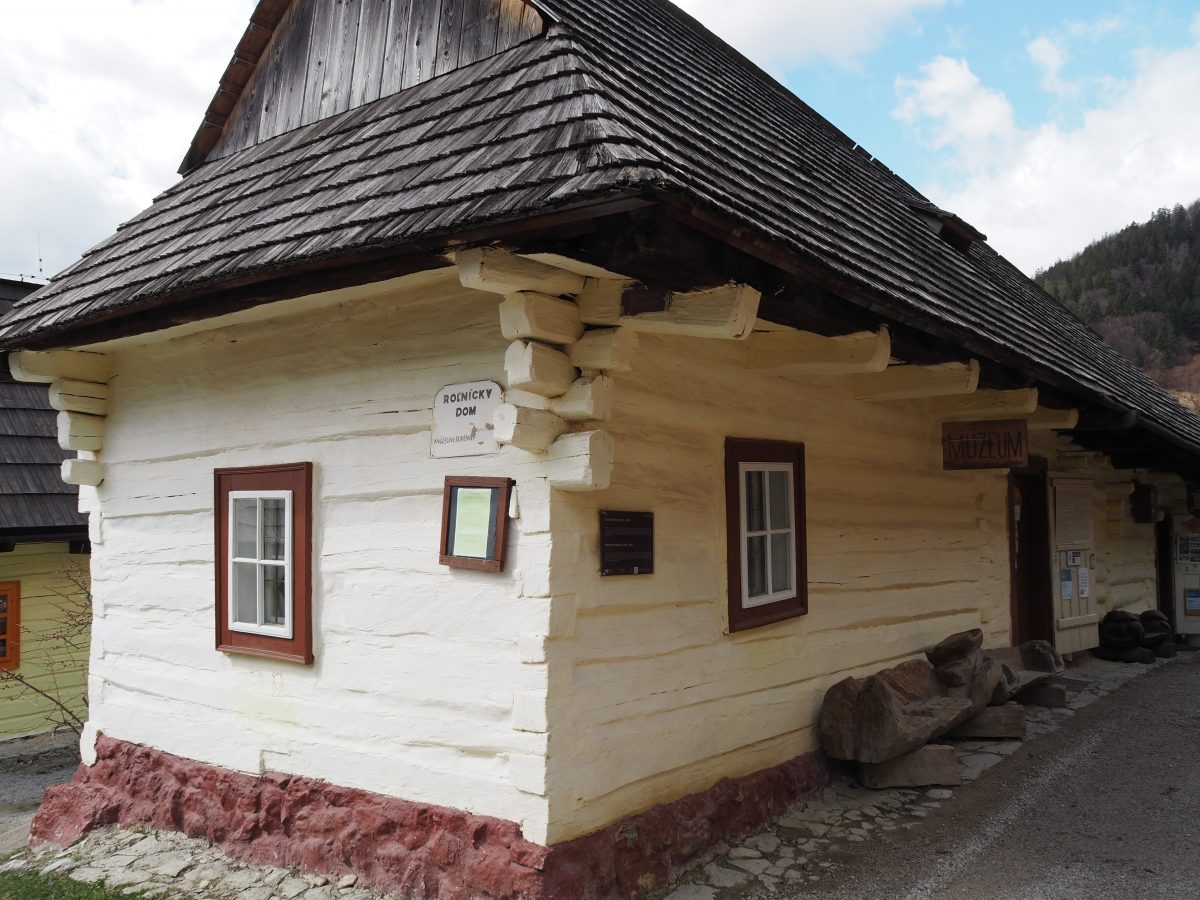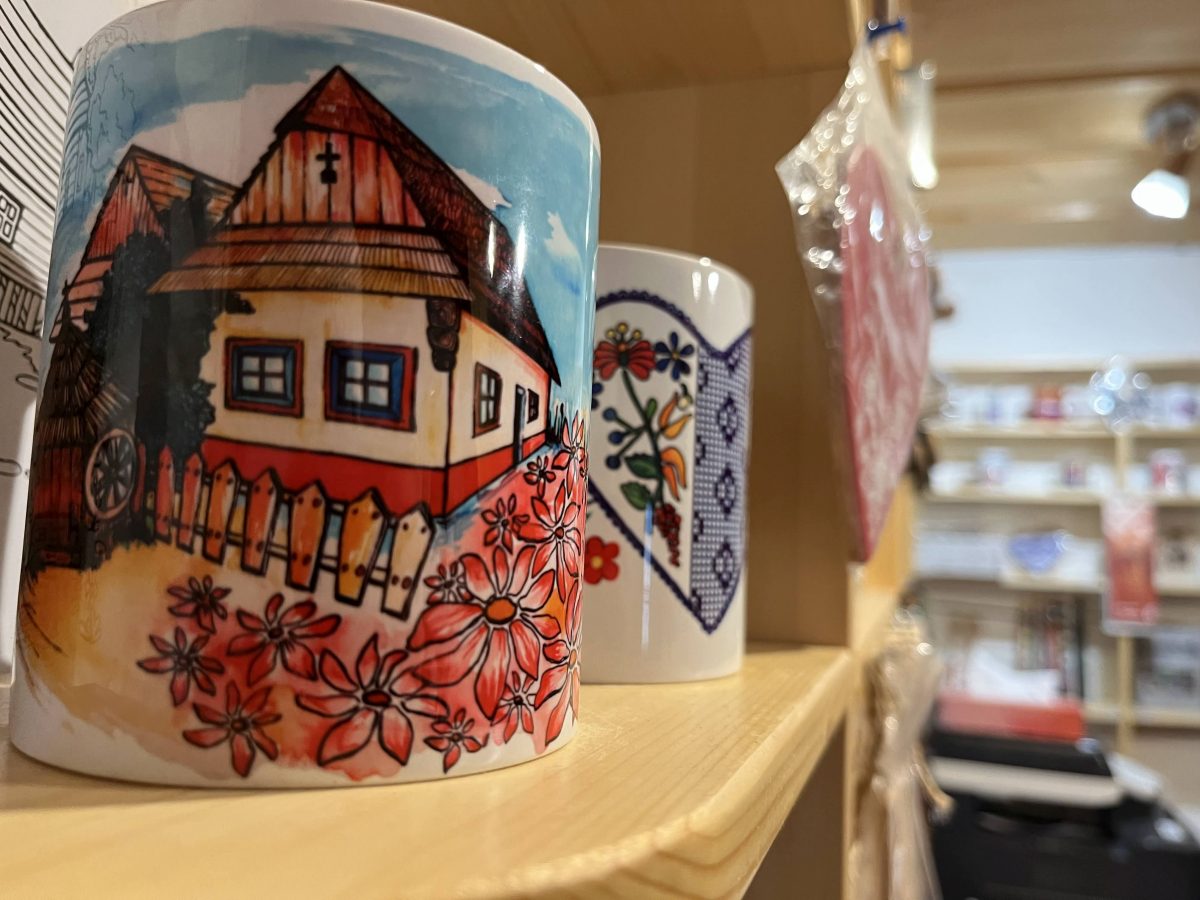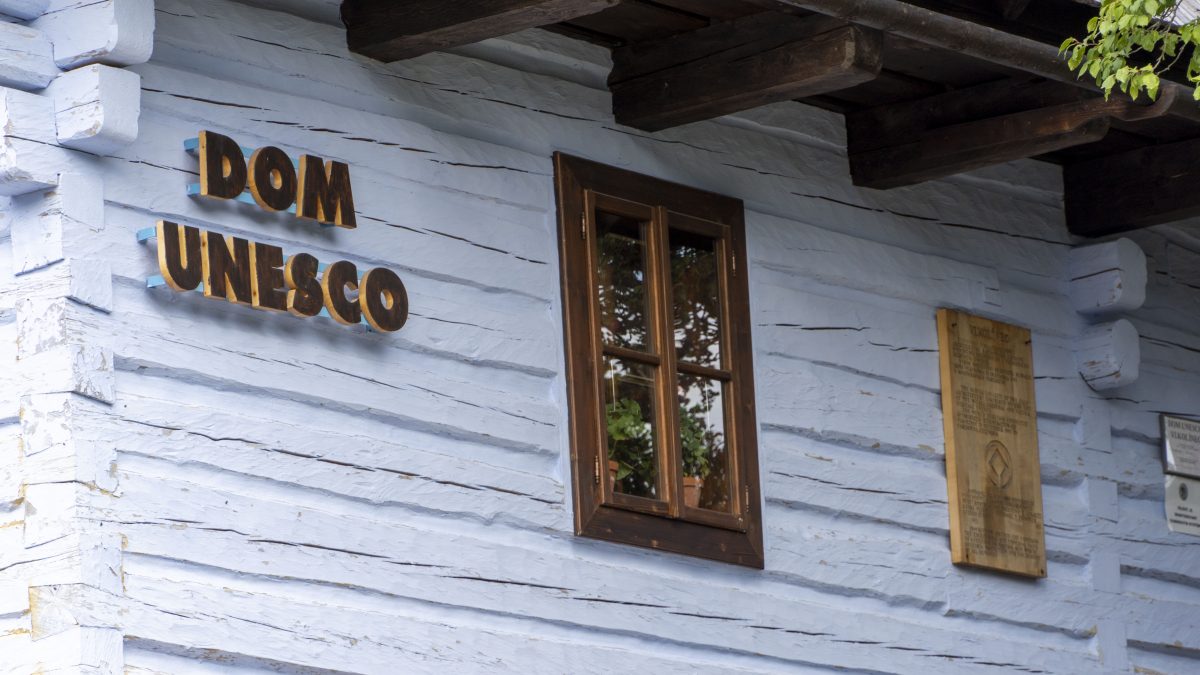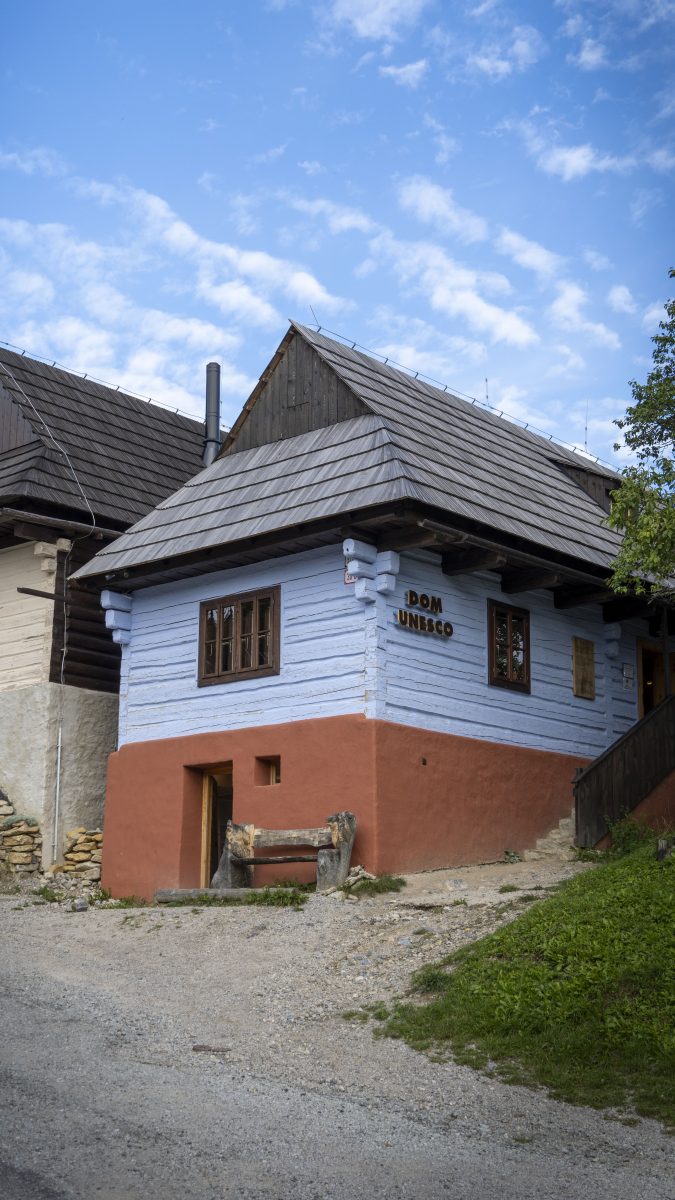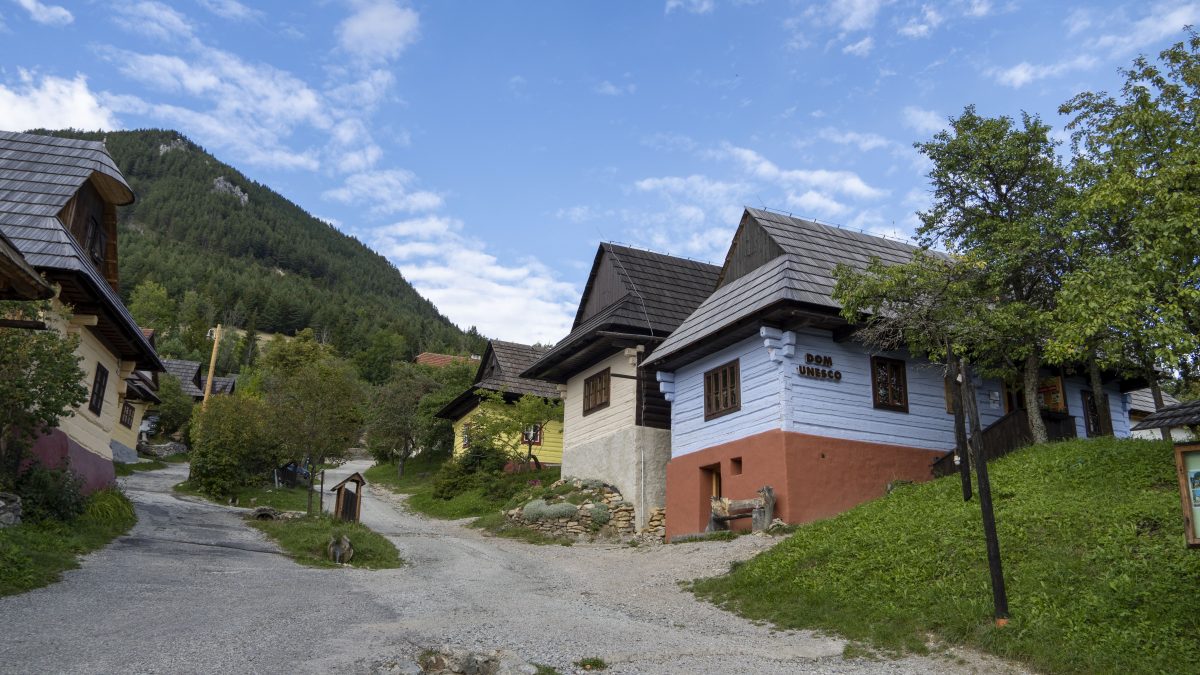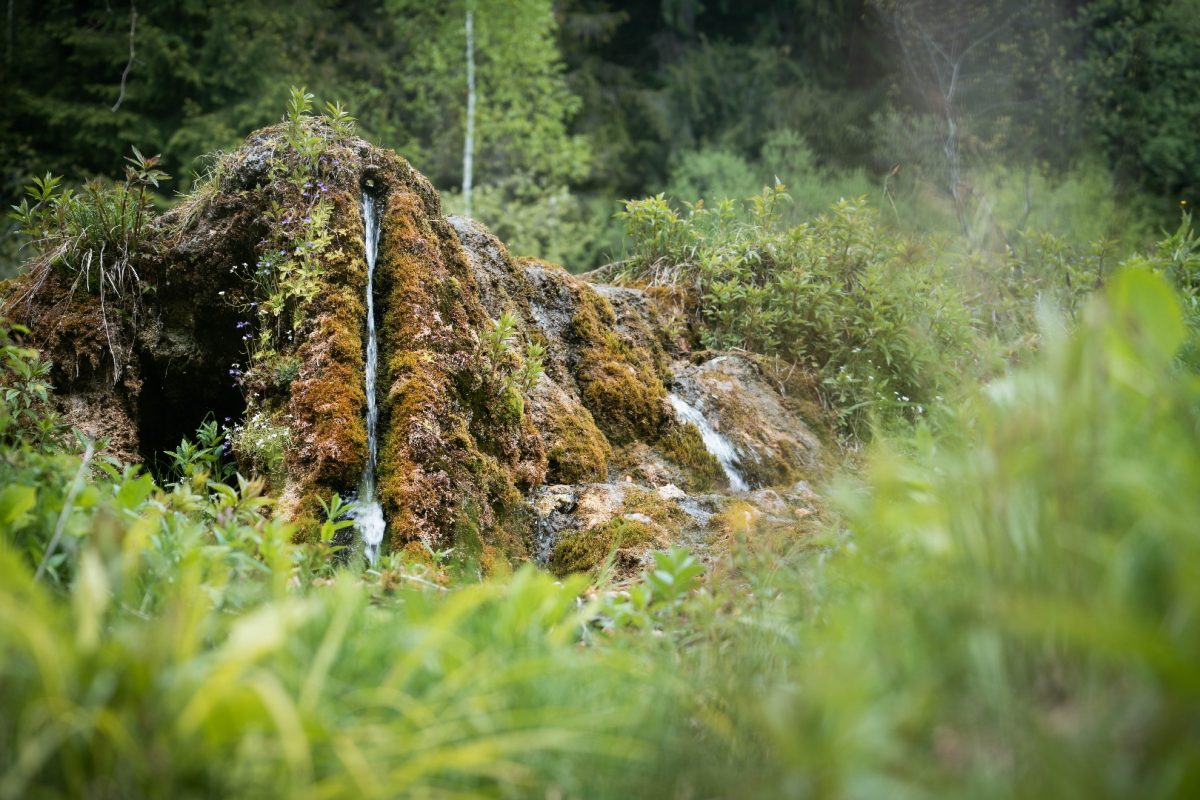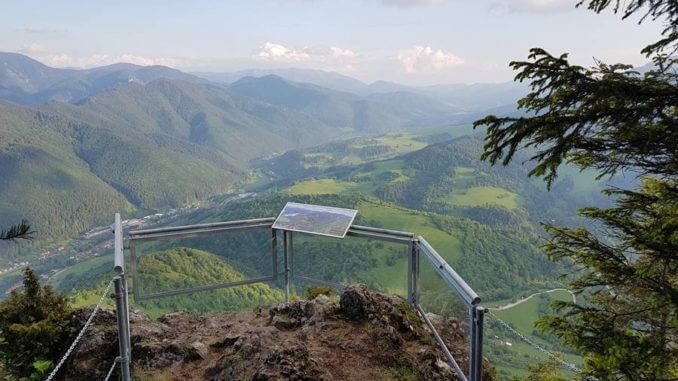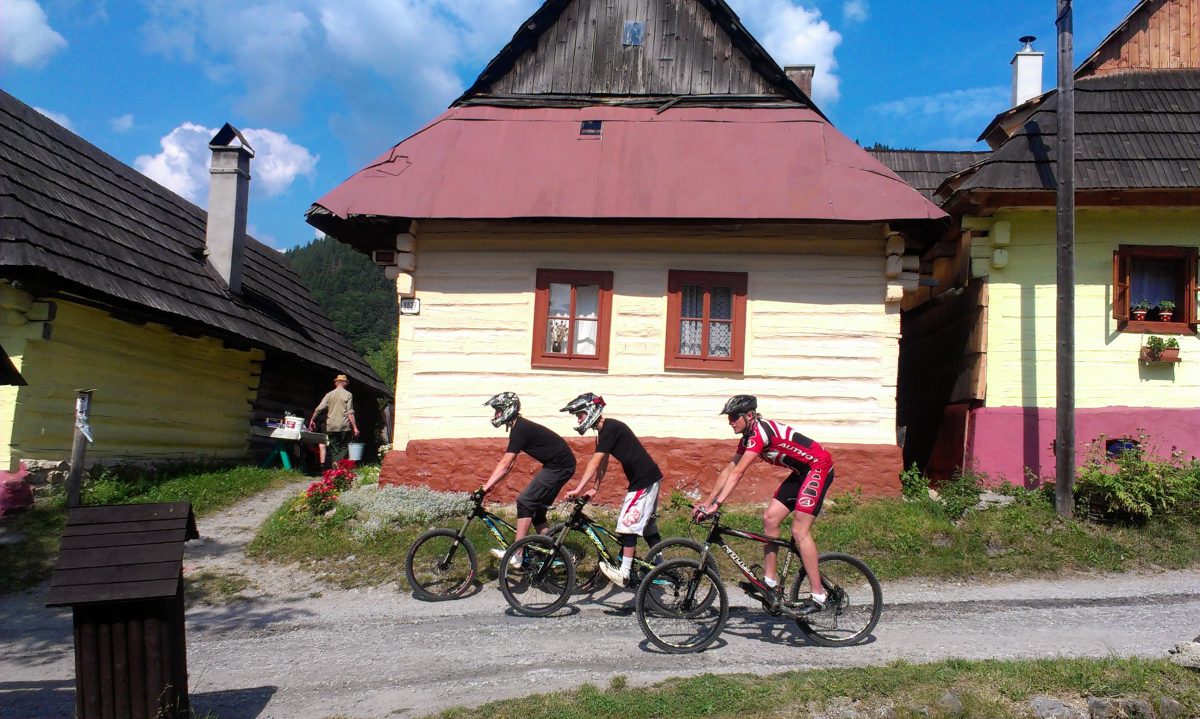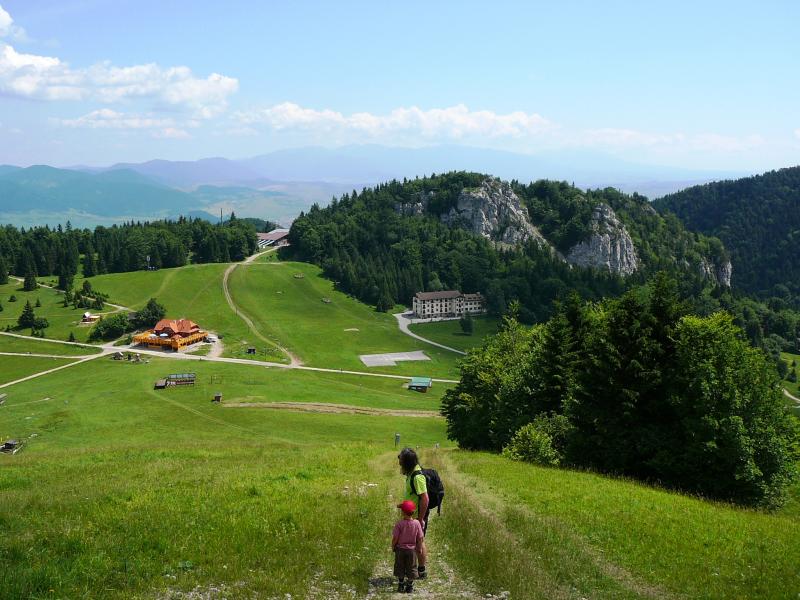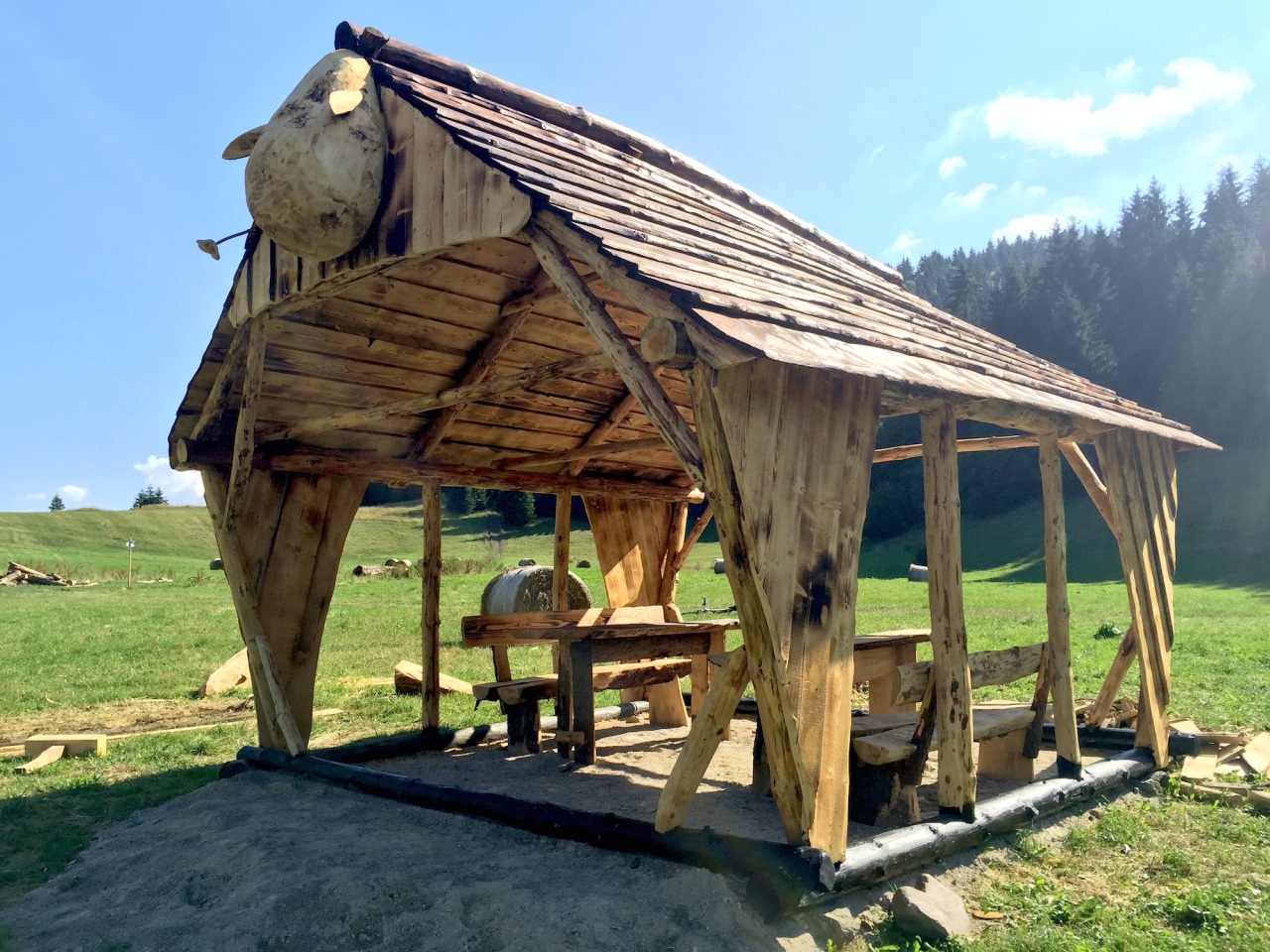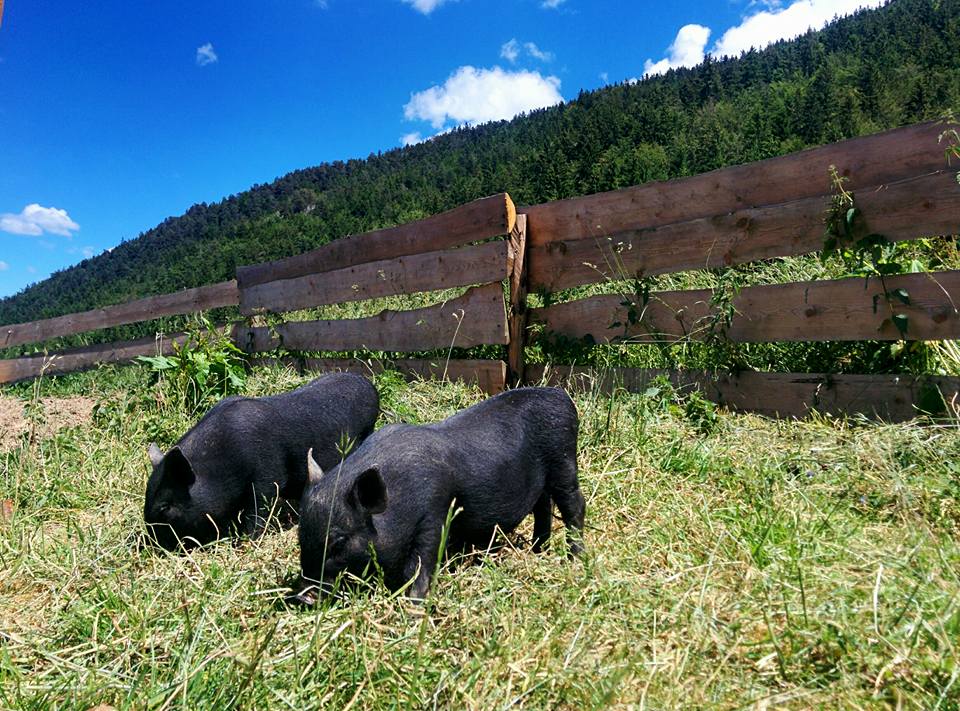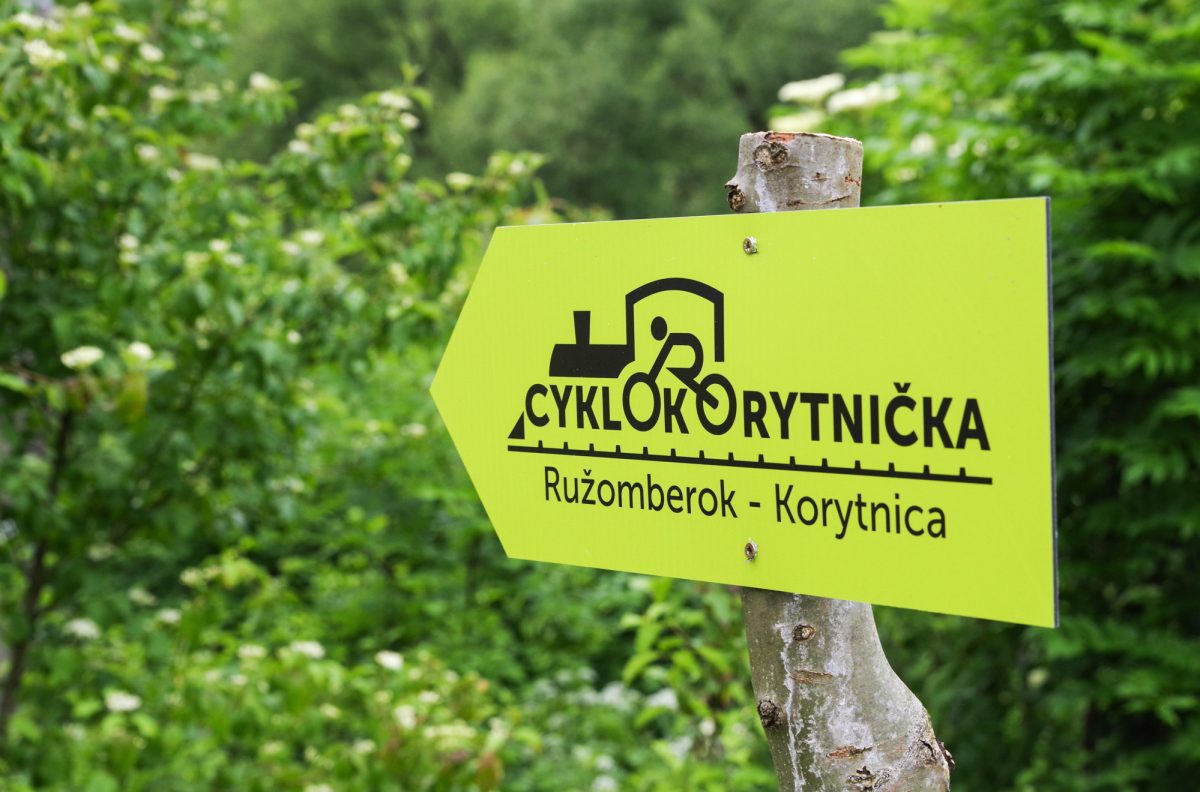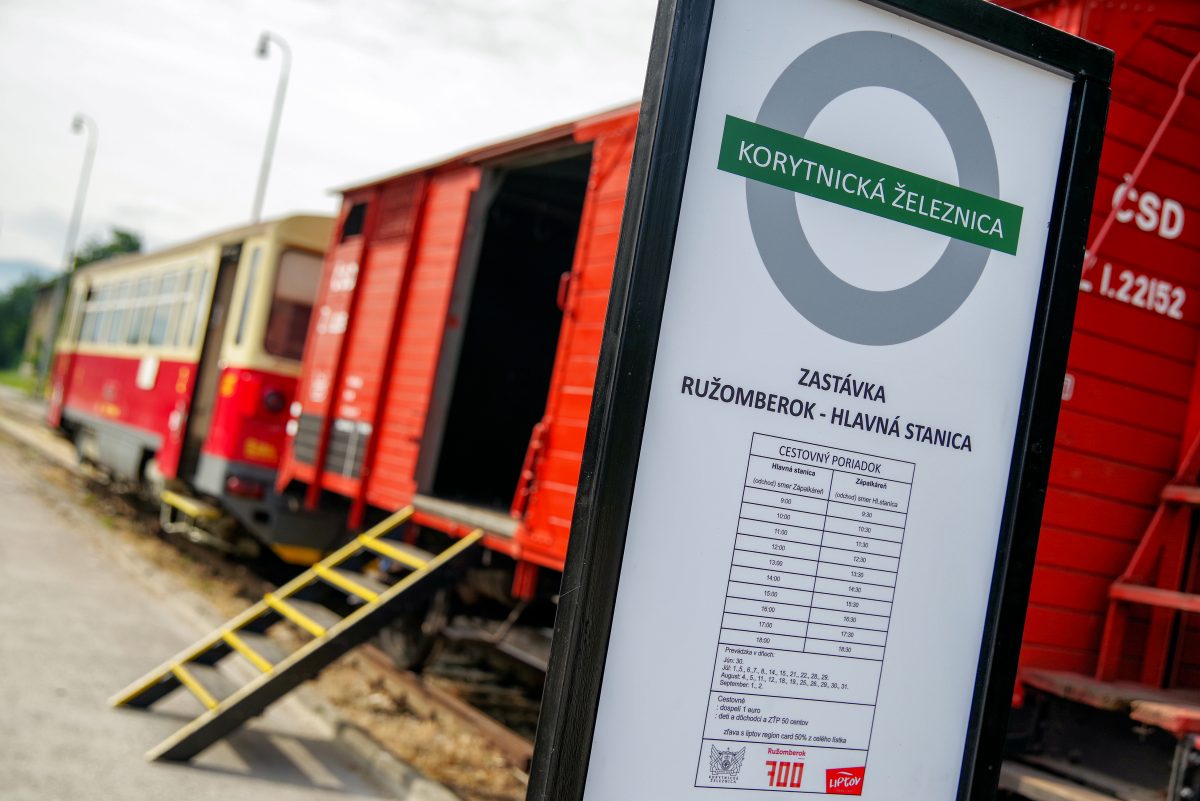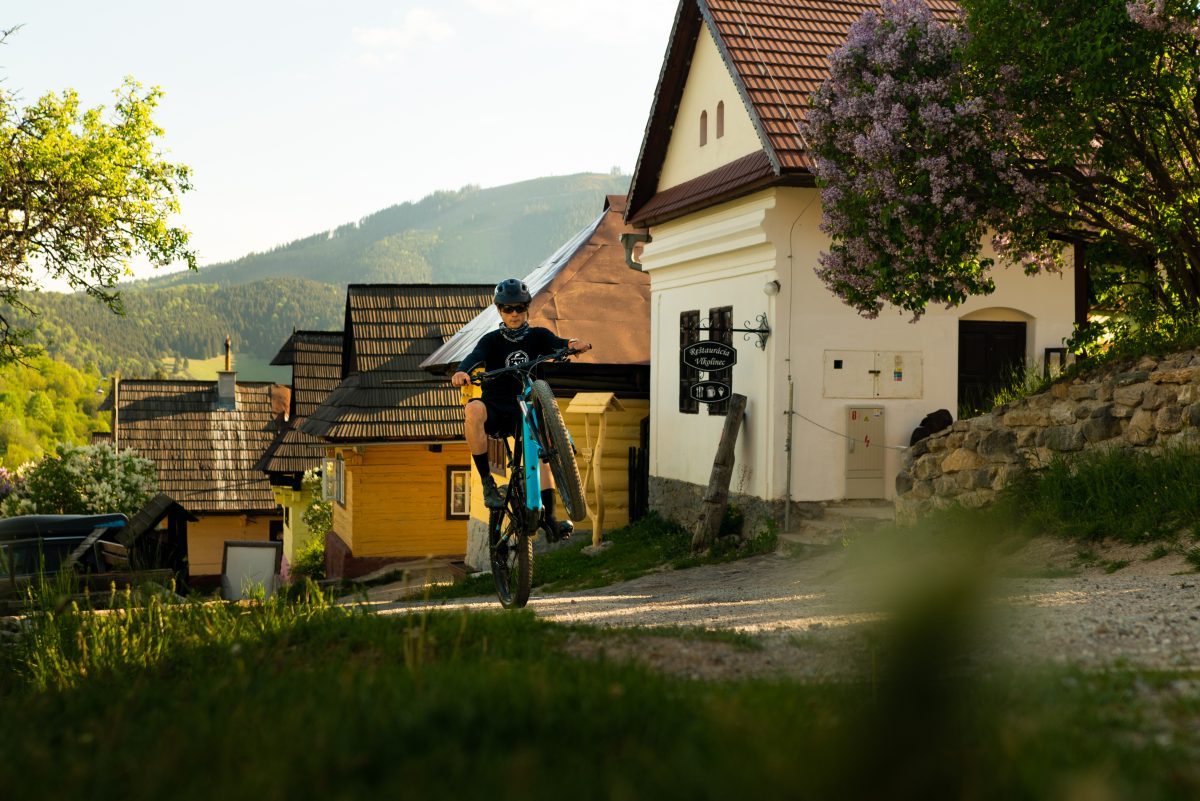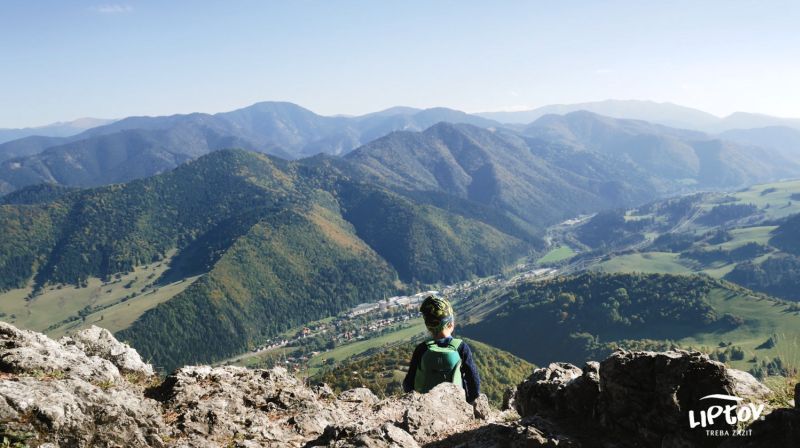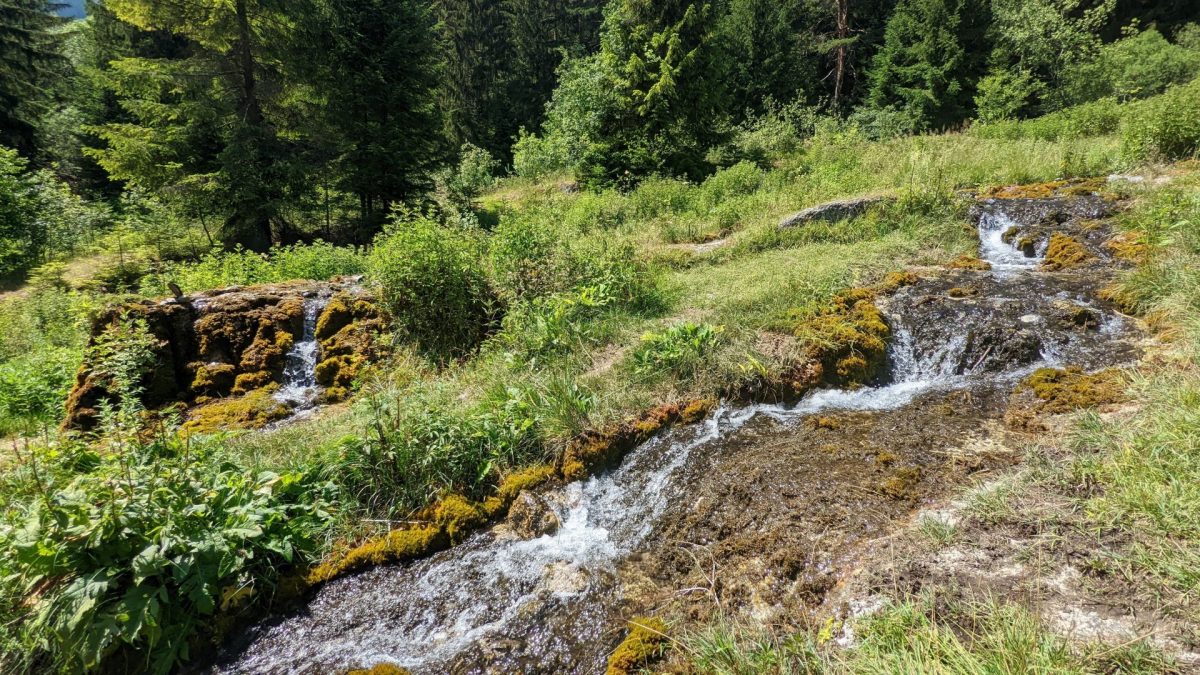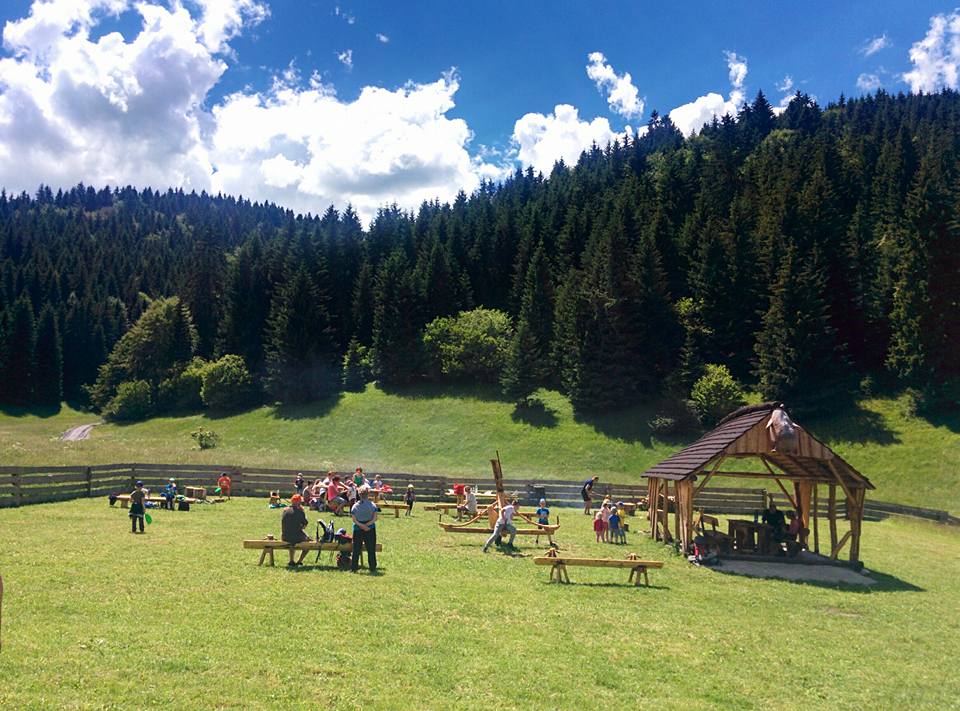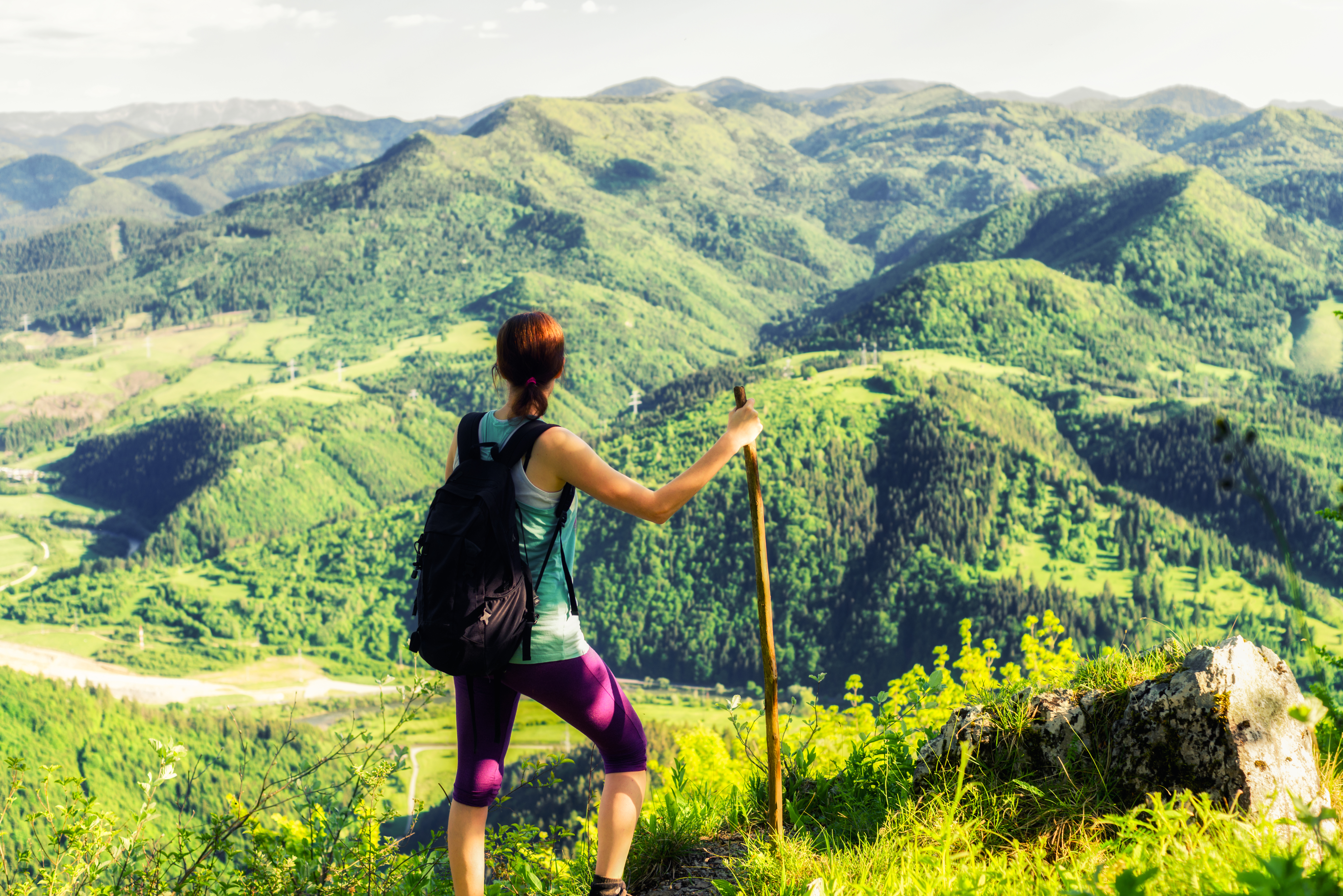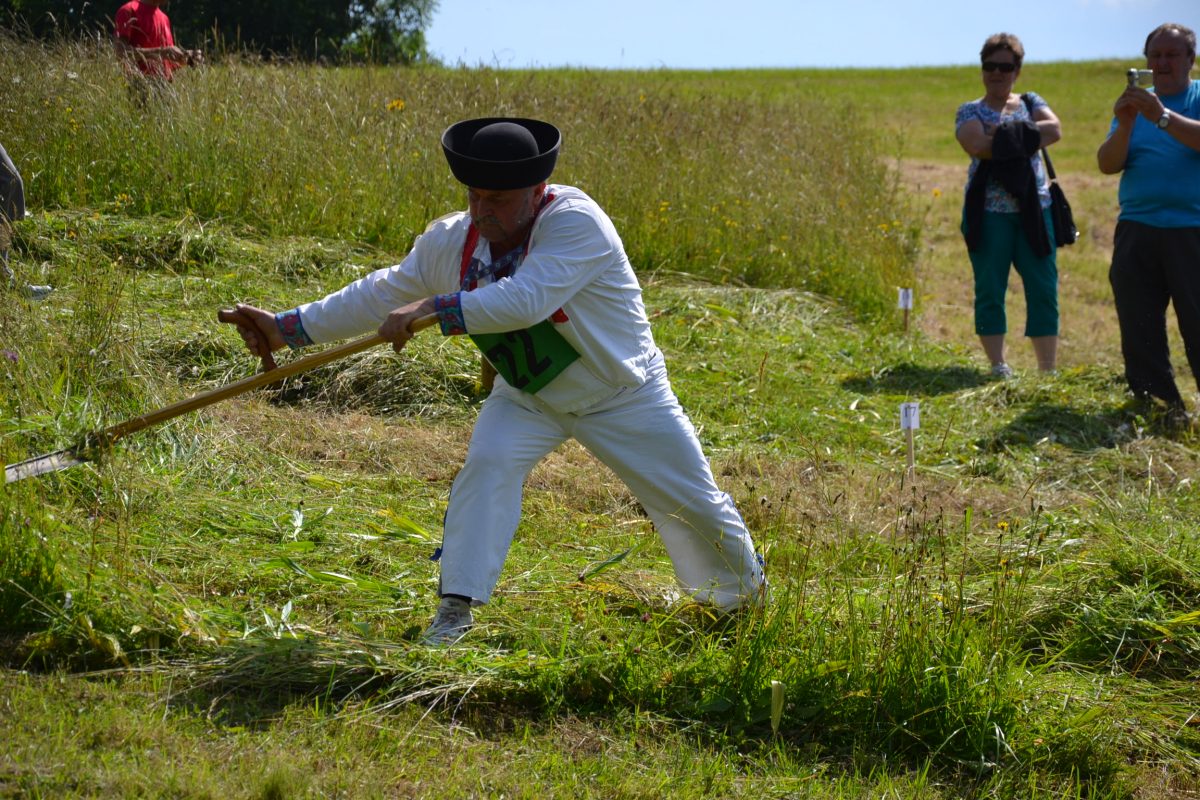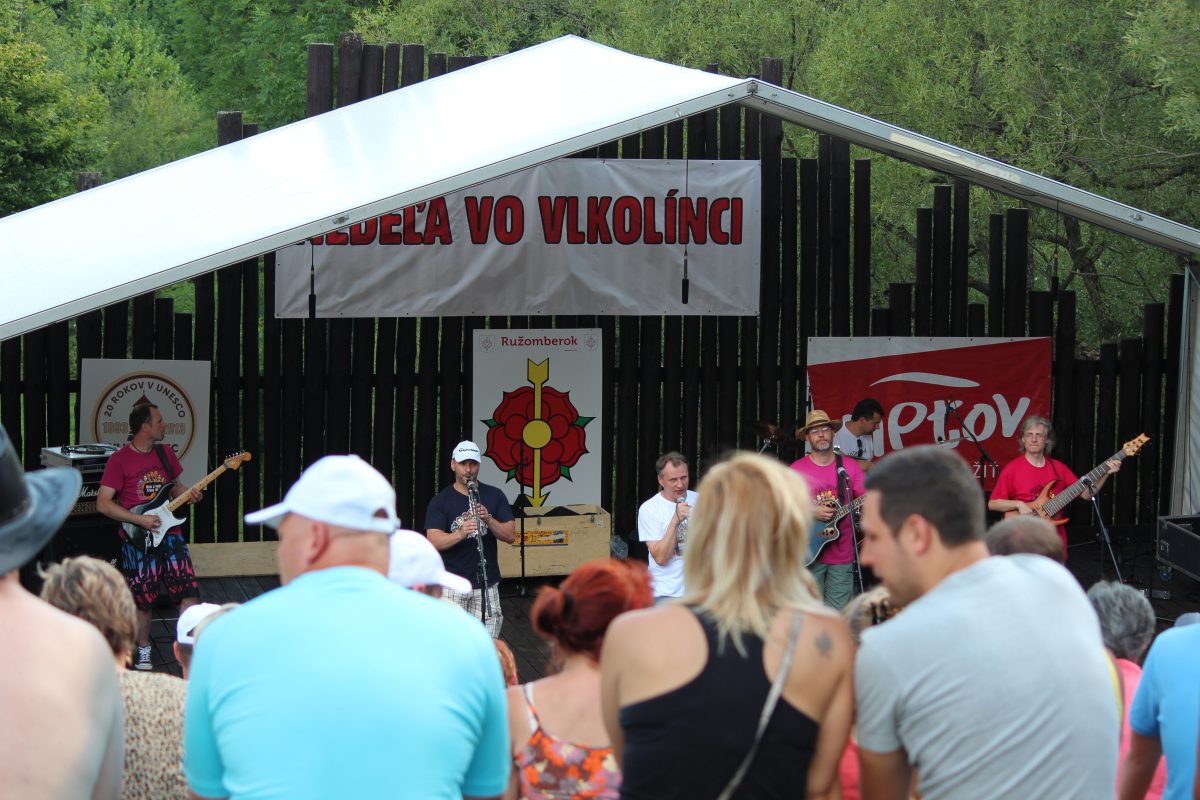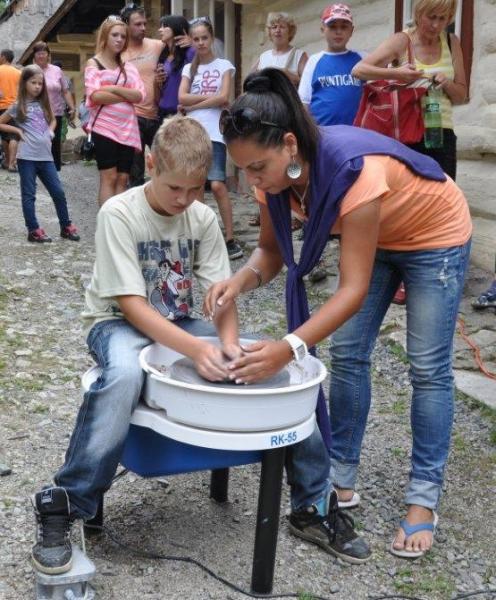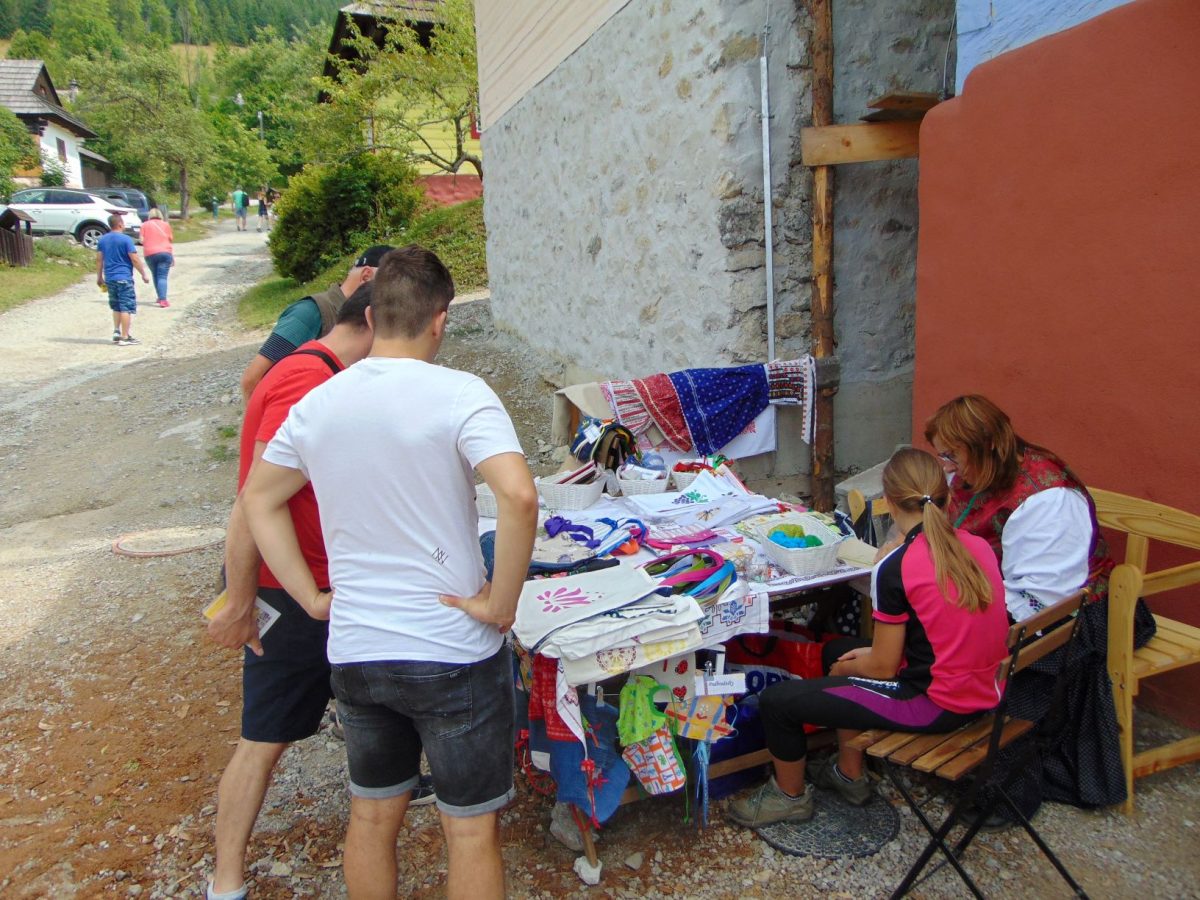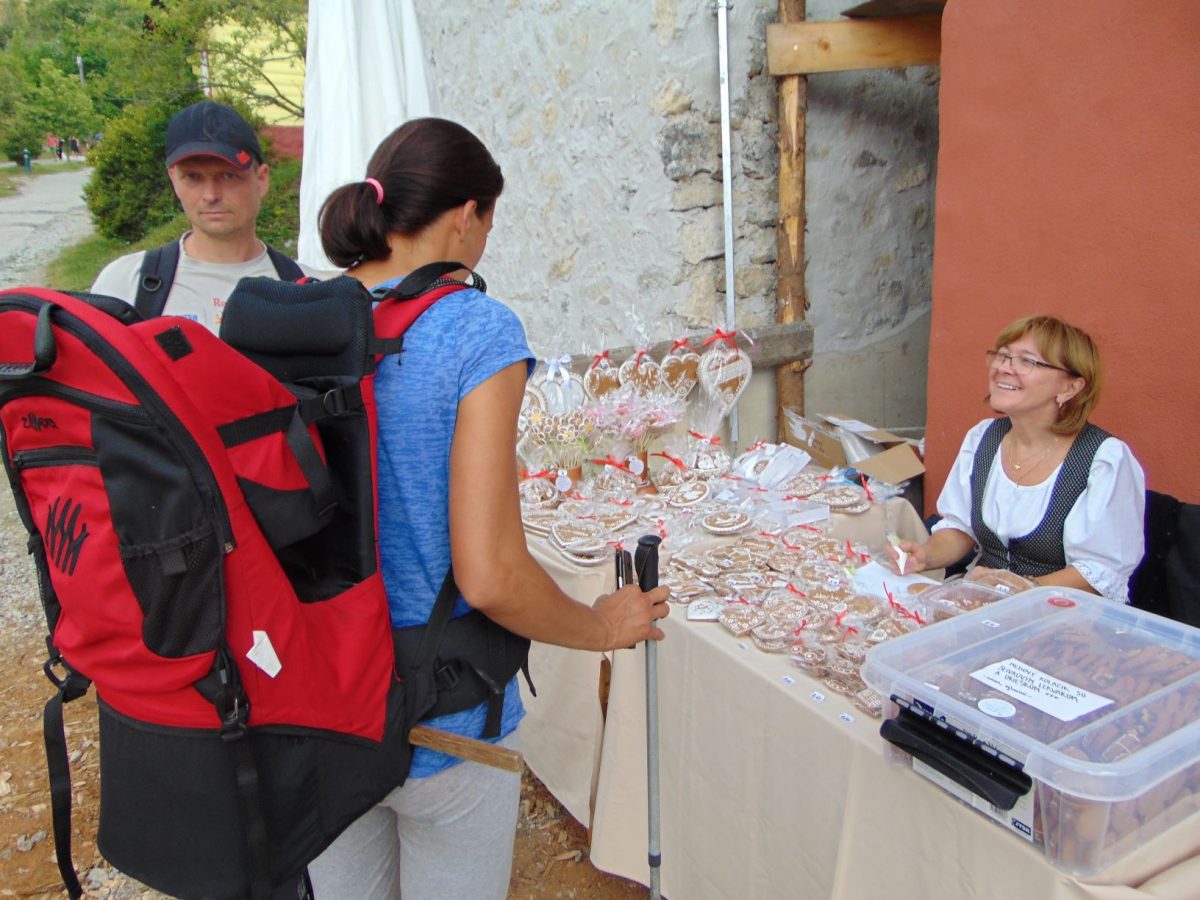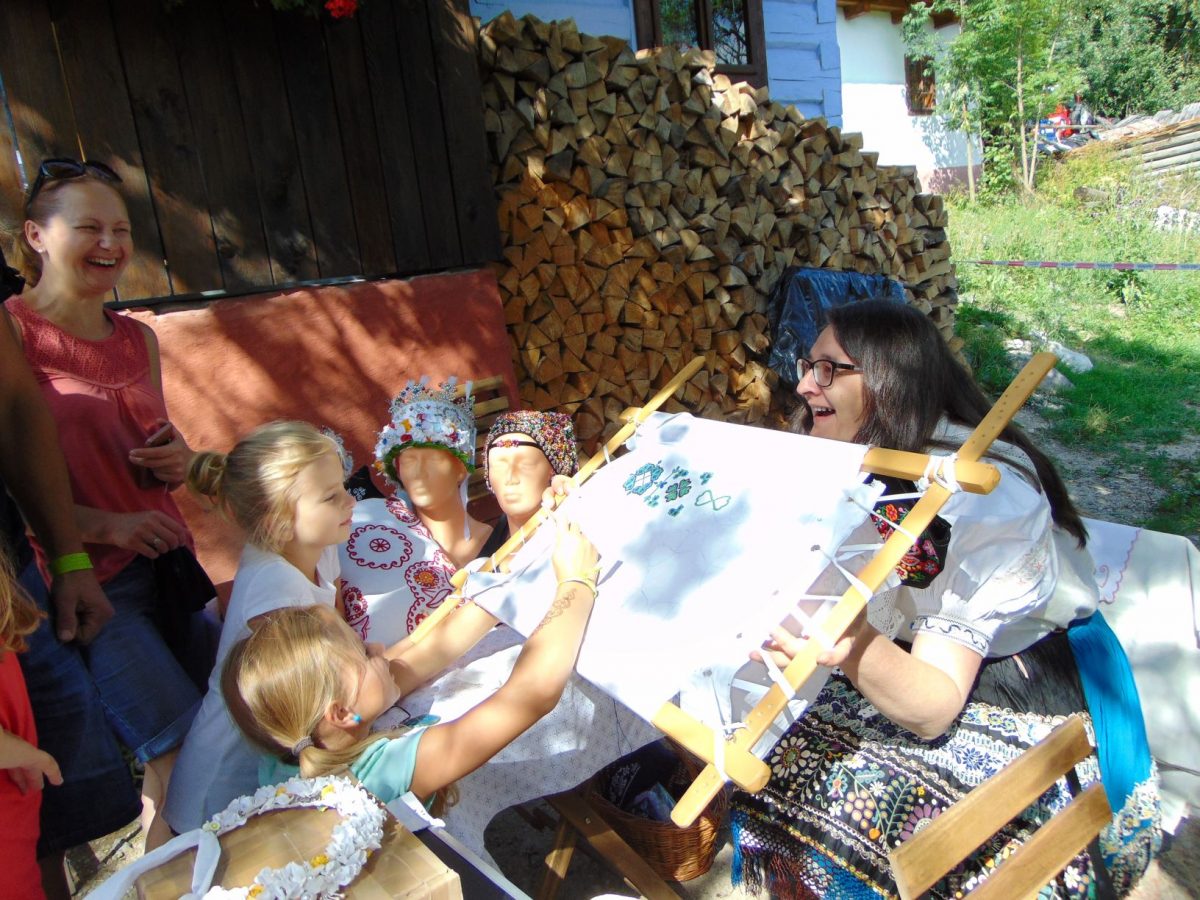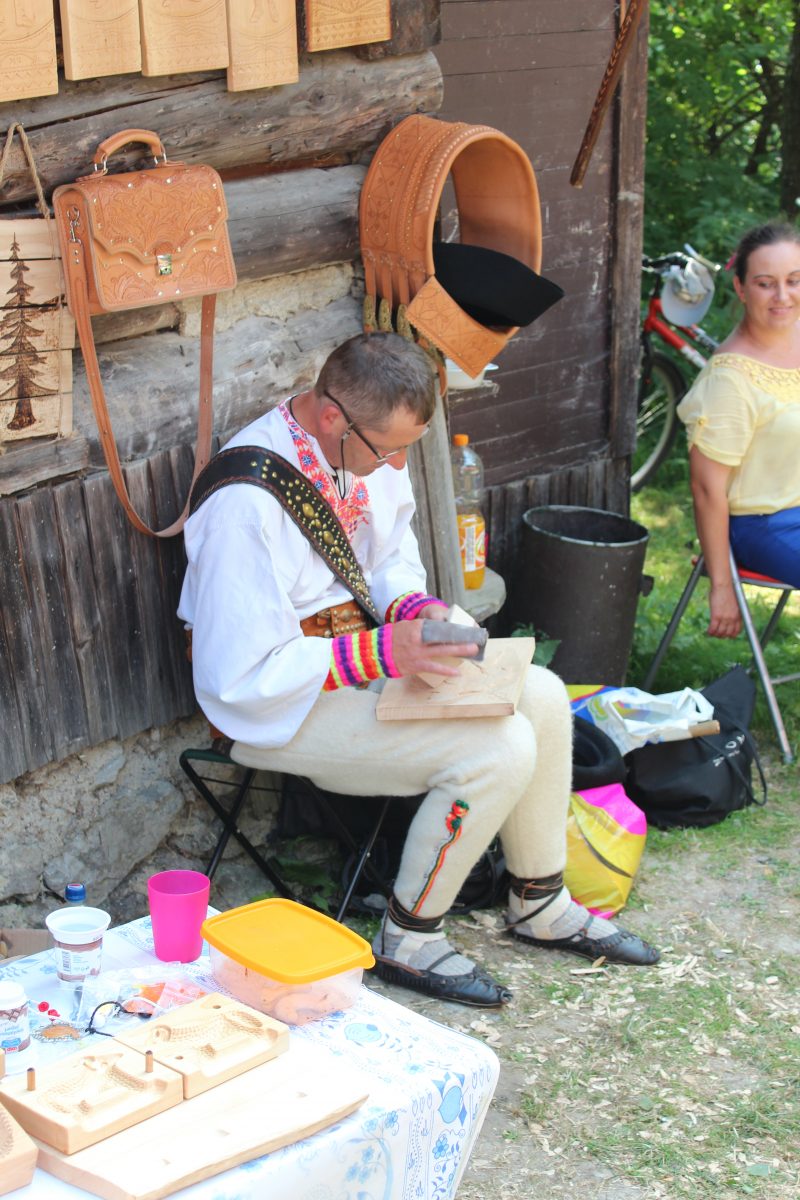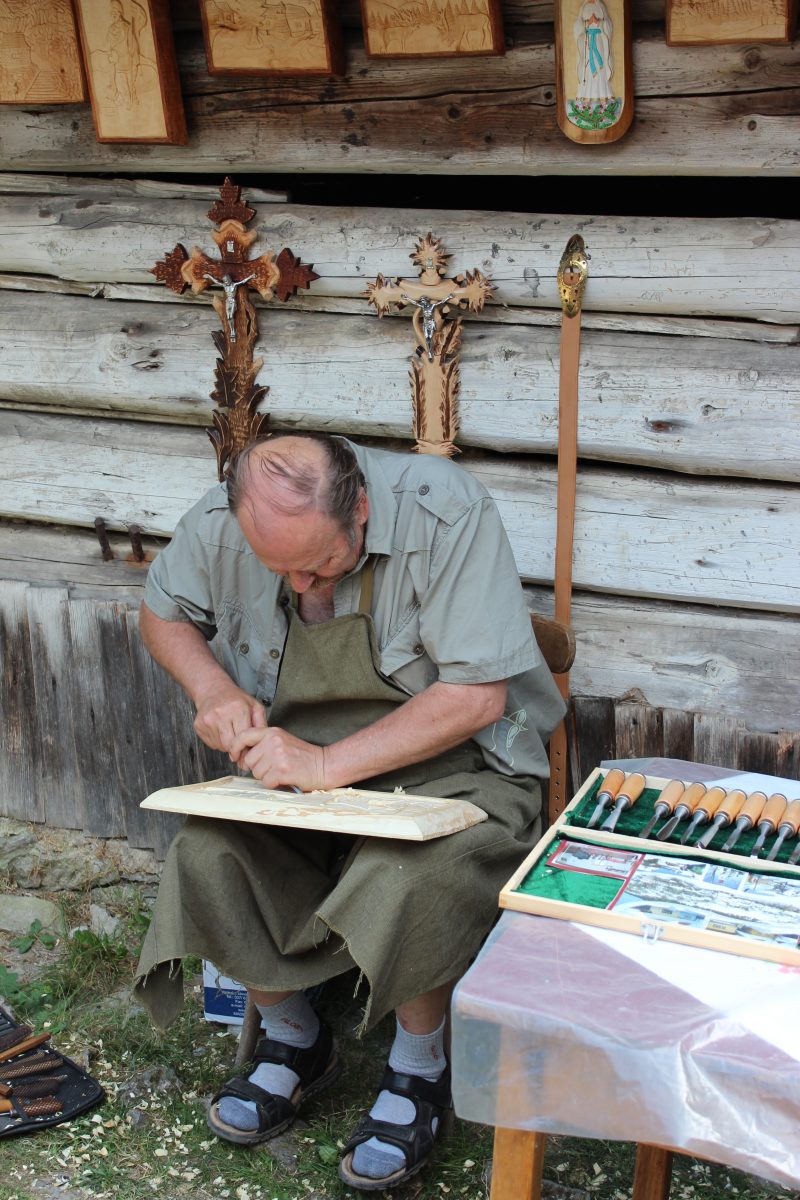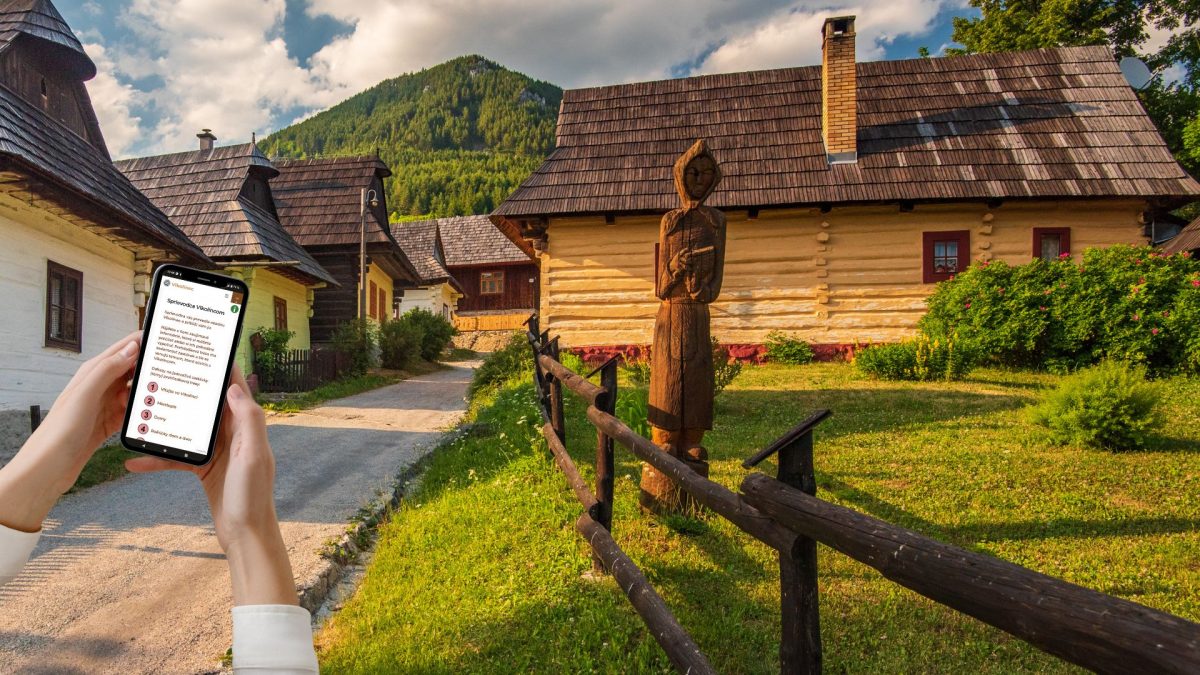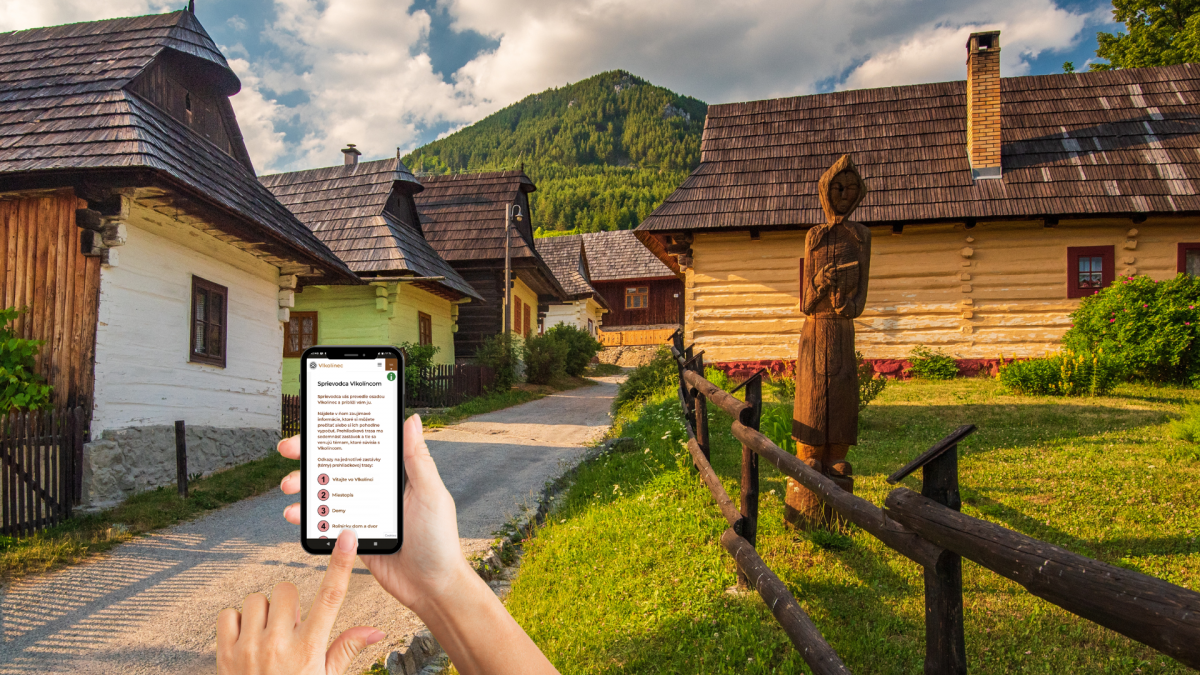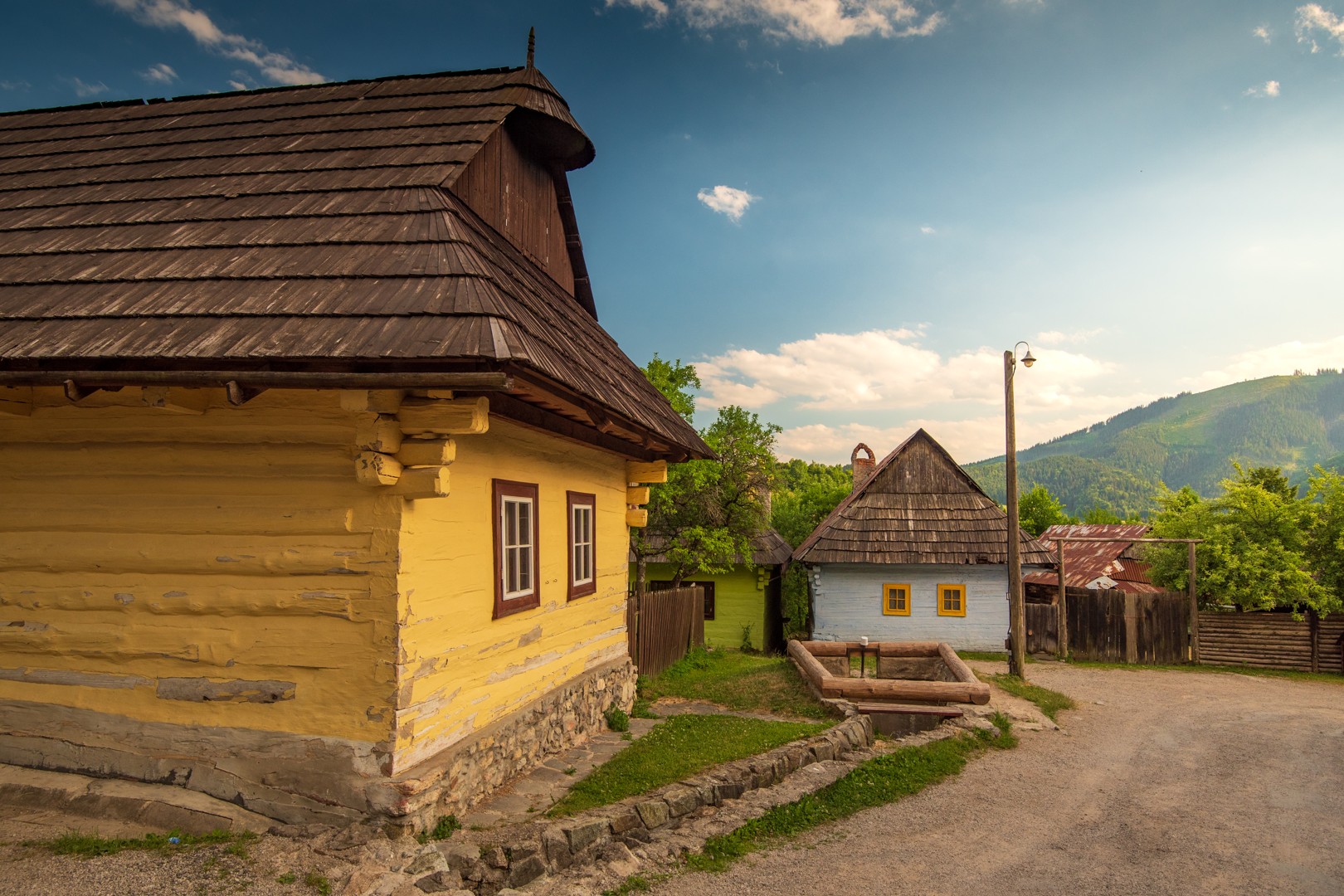

Vlkolínec
The monument reserve of folk architecture inscribed on the UNESCO World Cultural and Natural Heritage List
The foothill settlement called Vlkolínec is the monument reserve of typical medieval folk architecture made of wood. It is located in the heart of Slovakia, near the town Ružomberok. It is also connected with this town by a mountain trail.
Thanks to its isolation from the surrounding world, Vlkolínec has preserved its architecture in almost its original state, in the form of log buildings set in the beautiful mountain range of the Great Fatra.
The local part of Ružomberok town – named Biely Potok is the starting point to Vlkolínec – one of the most known foothill settlements. Vlkolínec was inscribed on the UNESCO World Cultural and Natural Heritage List on December 11th, 1993.
The inscription confirms the uniqueness of the site and its significant cultural, historical, natural and architectural value, which must be protected in order to preserve it for the future generations.
It represents the unique urban unit of original folk buildings. Based on the comparative study of ICOMOS, it was evaluated as the best-preserved settlement of this type in the Carpathian arch.
THE ENTRY to Vlkolínec is FREE of charge. Only the expositions themselves are paid.
Vlkolínec is located in the mountains of the Great Fatra mountain range below the hill called Sidorovo in the valley Revúcká dolina at an altitude of 718 meters.
The original inhabitants of Vlkolínec were woodcutters or coal miners. In the past, they mainly worked in the agriculture for example sheep breeding, beekeeping, production of traditional Liptov sheep cheese, different kinds of cheese and roof covers – shingles.
Vlkolínec is a typical example of a two-row street with long yards. The settlement is divided into two streets approximately in the middle of the village. One of them leads to the Baroque-Classicist Roman Catholic Church of the Virgin Mary visitation from 1875. The second street faces steeper terrain below the foot of Sidorovo Hill (1,099 m. a. s. l.).
The most important buildings are located in the middle of the settlement – namely the Bell tower and the well as the only source of drinking water.
The oldest report about Vlkolínec dates back to 1461, which was part of the property of Ružomberok town. The original name is derived from the frequent occurrence of the wolves in the forested mountain area. The formation of the settlement is assumed during the 14th century to the beginning of the 15th century. In the 15th and 16th centuries, Ružomberok town was subordinated to the estate of Likava Castle, to which they had to pay taxes. For example, at Easter time, Vlkolínec had to hand over a calf, two cakes and one hundred eggs.
Until the end of the 16th century, Vlkolínec was the settlement with about five houses. In 1766 it is reported that over 100 inhabitants lived in Vlkolínec. By 1830, their number had increased to over 300 with 47 houses. The largest number of inhabitants was in 1869, namely 345 with 82 houses. Later, their number decreased to approximately 200 inhabitants.
In the center of the village stand two most frequently photographed objects of Vlkolínec – two-storey Bell tower made of logs from 1770 standing on the stone pedestal and the log Well with the depth of 13 meters from 1860. The protected buildings of the settlement include 45 wooden houses with farmyards from the 18th century. The unique was the way how they were modified.
The walls of wooden houses are made of partially or completely from the drawn beams, laid horizontally. The steep sloping terrain was levelled by a rather high stone underpinning. Between the beams there were joints that were covered with battens or moss. Unevenness on the wall was treated with greased clay.
Twice a year – in spring and autumn – they painted them with blue, pink and white lime paint.
Potato pits were dug in the houses to replace the cellars. The roofing of the gable roofs was made by the chipped wood shingles. Most houses are three-room with space shifting in a row. It enters the pitvor /entrance hall usually used for placing of working tools, storing food and ladder leading to the attic/ – the centre, where the kitchen is also located. From the pitvor you can get either to the room or to the storeroom. Two-room houses with a side storeroom or semi-detached houses with a common pitvor are also interesting.
A typical example of Vlkolínec house is the House of the farmer – one of the expositions of the Liptov Museum in Ružomberok. The building, built in 1886, was opened to the public in 1991. Its preserved original interior division and interior furnishings are a faithful picture of the settlement inhabitants´ way of life at the end of the 19th and the beginning of the 20th century. Other buildings in Vlkolínec Monument Reserve are inhabited. About 20 inhabitants live here, so visitors have to be satisfied with just looking at their exterior.
The exposition of the UNESCO House was created as a space for the promotion of Vlkolínec and UNESCO monuments in Slovakia. Visitors can see displayed artworks of the painters, photographers and folk artists or buy the souvenir.
Phone: +421 918 596 432, info@vlkolinec.sk
Vlkolínec is a part of the Big Fatra National Park. A cycling route passes through it and the owners of several wooden houses provide accommodation.
Along the educational trail from Vlkolínec you can walk to the Ski&bike park Malinô Brdo or to the mini farm Sidorovo. If you turn right in front of the Sidorovo farm, you will reach Sidorovo viewpoint along the red hiking sign.
Before or after visiting Vlkolínec, you can make a trip by the Korýtko train in Ružomberok (during summer holidays) or to stop by the travertines called Jazierce.
In the summer, there are several attractive events, such as “Sunday in Vlkolínec”, which always takes place at the beginning of August. At the event you will see performances of the folk singers, ensembles, artists, woodcarvers and other craftsmen.
- Fujara znej Vlkolíncom (June) – Traditional Slovak pipe instrument sounds through Vlkolínec
- Craftsmen in Vlkolínec (June, July – August)
- Vlkolínec festival (August)
- Craft workshops (September)
- Thanksgiving for the harvest (September)
- Vlkolínec pig slaughter (December)
You can walk around the village with a guide, whom you can hire or you can read or listen to an audio guide. The sightseeing route has 17 stops and they deal with topics related to Vlkolínec.
The stops/topics of the tour route are:
- Welcome to Vlkolínec mountain settlement
- Location
- Houses
- Farmer´s house and yard
- Architecture
- The Well
- The Centre
- The Belfry
- Colour scheme of the houses
- The Brook
- The Inhabitants and life
- Wooden shingle
- School
- Church
- Wood
- Hay barns “Stalls”
- Surroundings

The activity is implemented with the financial support of the Ministry of Transport of the Slovak Republic.

